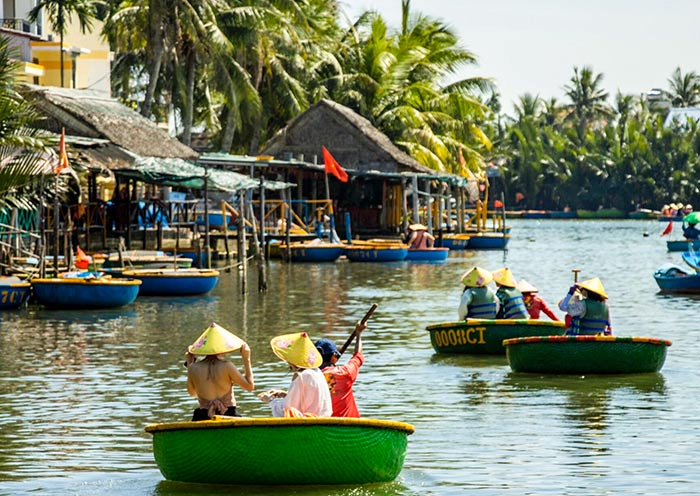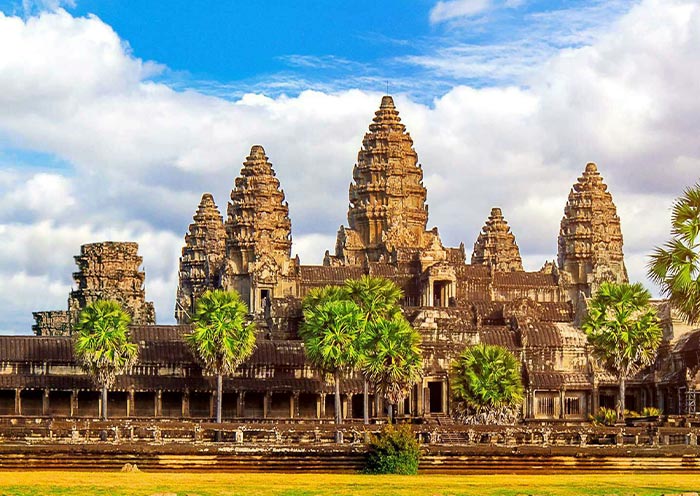1 Month Indochina China Odyssey Tour: Thailand Cambodia Vietnam and China
- Highlights
- Itinerary
- Price
- Trip Notes
- Accommodation
- Photos
- Reviews
Month-Long Pushing North: Tracing Asia Continent
Want to see something new and be one of the happiest? Your 1-month Thailand, Cambodia, Vietnam, China Tour rivals the spirit of Around the World in 80 Days, hopping between the ancient Indian, Chinese, and Khmer civilizations, interspersed with natural beauty—all while enjoying superior comfort via flights and high-speed rail.
1-4 Days in Thailand: This Indochina & China saga starts in vibrant, Buddhist capital, Bangkok. The golden palaces, temples, and bustling streets showcase an impressive Thai style. A visit to Elephant Nature Park near Chiang Mai reminds you of hot tropics.
5-7 Days in Cambodia: Then, a short flight takes you to Siem Reap for UNESCO Angkor Archaeological Park. This lost site, hidden under the rainforest, confirms that the grand Khmer civilization was never truly buried.
8-15 Days in Vietnam: Visit vibrant streets of Ho Chi Minh City perfectly complement the relaxed local life of Mekong Delta. The UNESCO Hoi An Town preserves Sino-Japanese-Vietnamese architecture. You will also cruise oceanic karst kingdom of Ha Long Bay and experience historical weight of capital Hanoi.
16-30 Days in China: Stroll along the Bund in Shanghai among its towering skyline before turning to Zhangjiajie to witness UNESCO Avatar Mountains. Spend time with ethnic minorities in Fenghuang and Furong Ancient Towns. Travel to Chengdu to see beloved Pandas and UNESCO Leshan Giant Buddha. Finally, end with Xi'an and Beijing for grand Terracotta Warriors, Great Wall, and Forbidden City.
We, Asia travel experts, offer smooth itinerary planning, flawless transportation connections, and guaranteed accommodation with five-star service. Email us today to let us know your departure date!
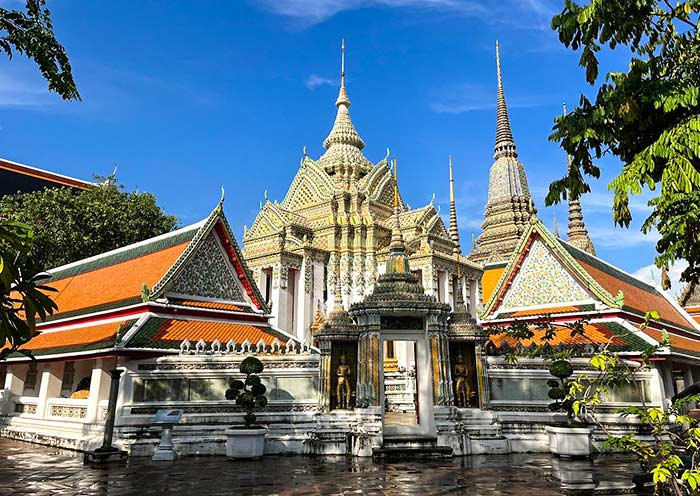
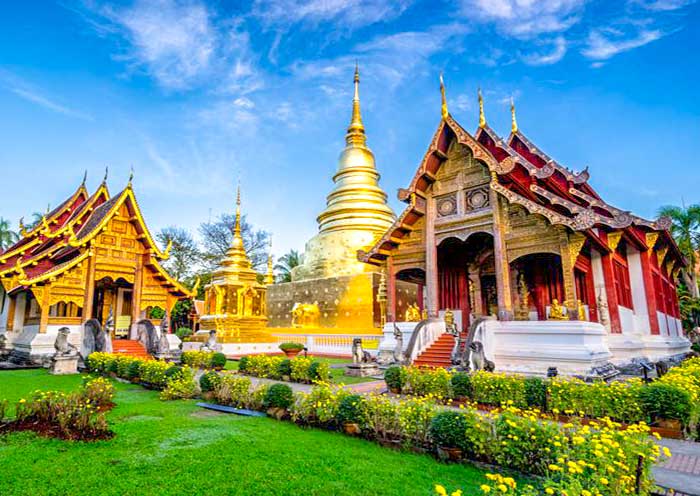
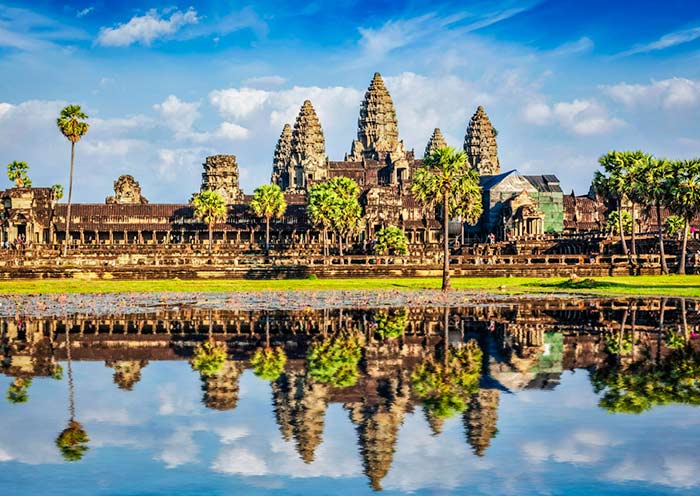
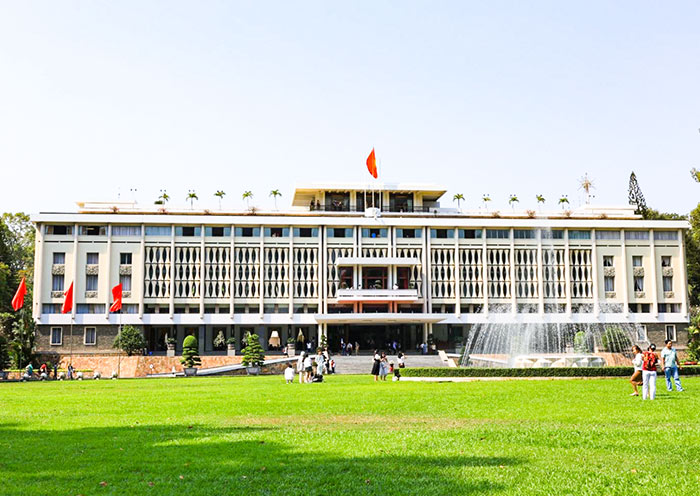
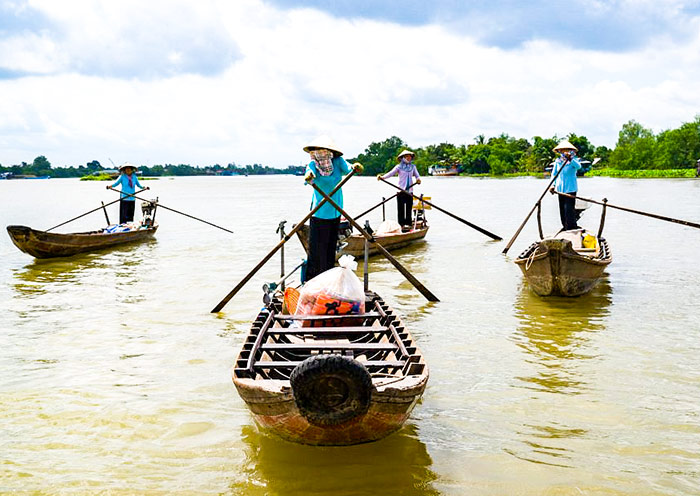
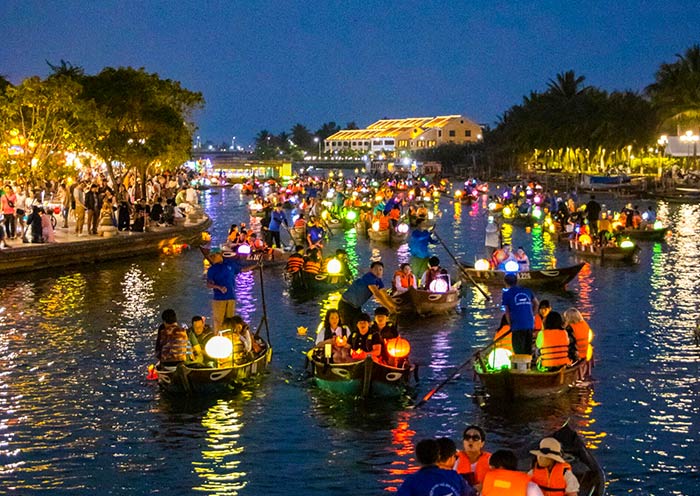
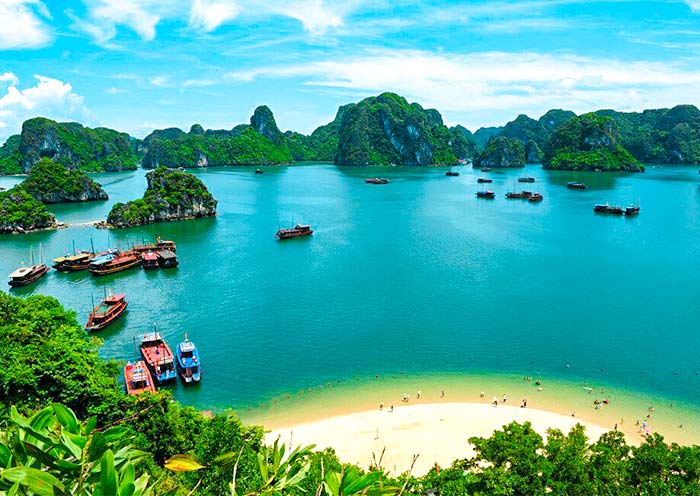
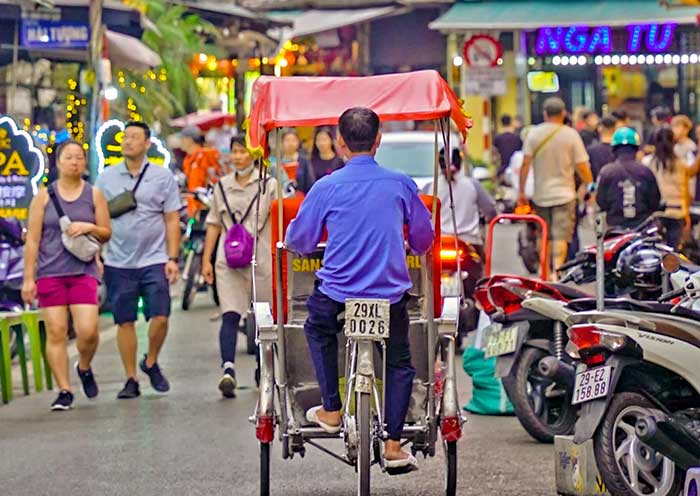
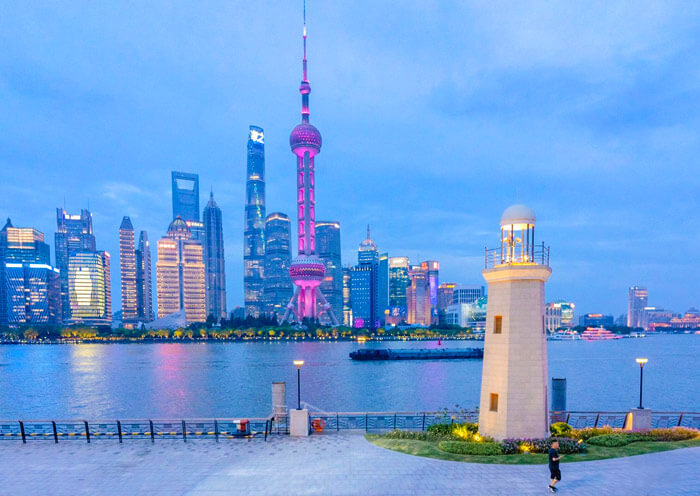
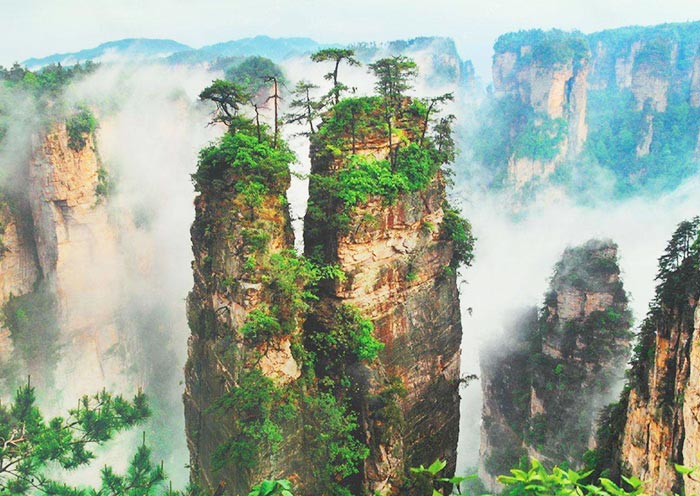
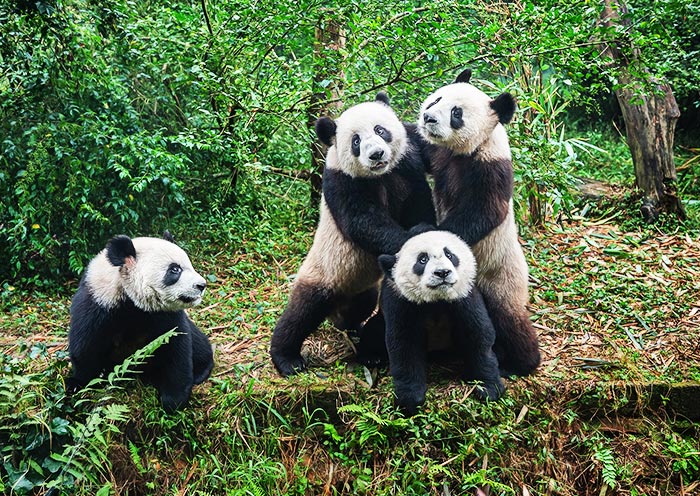
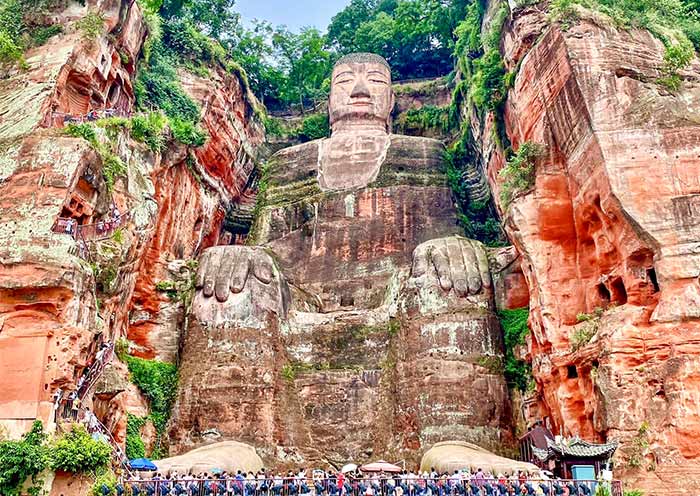
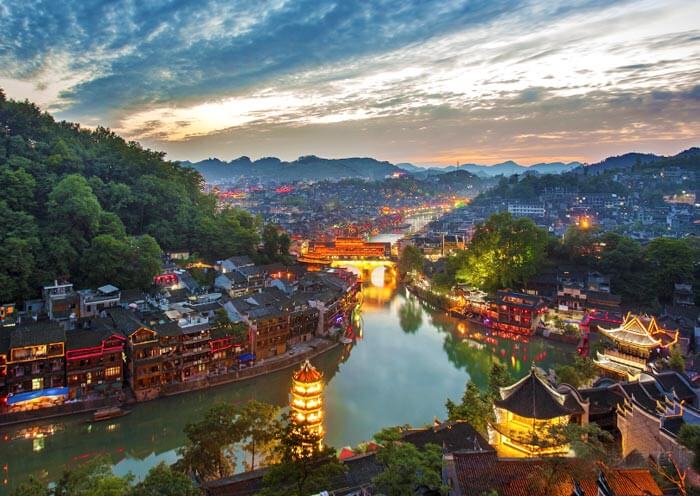
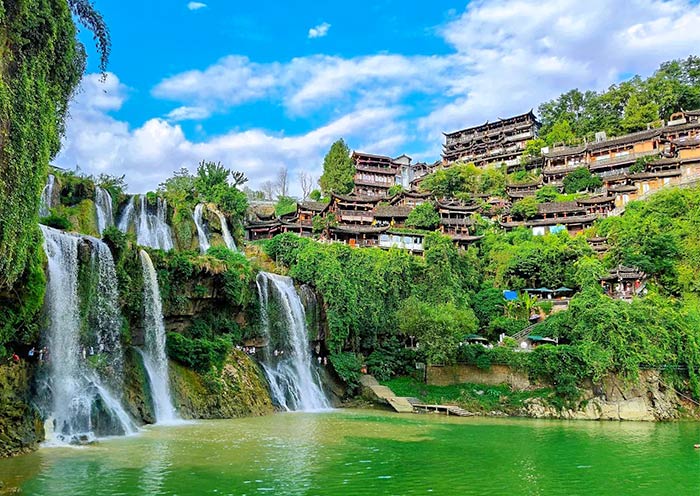
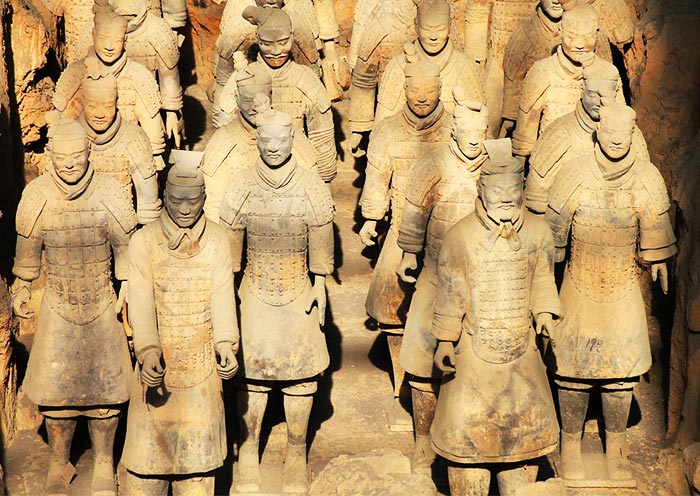
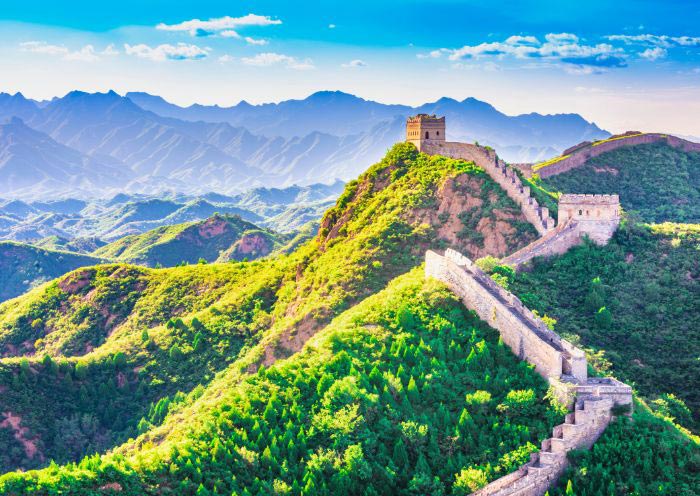
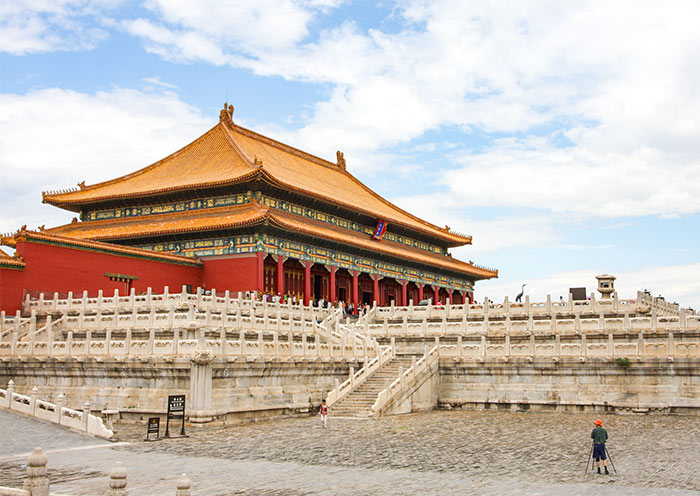
Itinerary at a Glance
Bangkok (1.5 Days)
Wat Phra Kawe, Grand Palace, Wat Pho, Wat Arun Sunset, Chinatown
Chiang Mai (1.5 Days)
Elephant Jungle Sanctuary, Chiang Mai Cooking Class (Optional)
Siem Reap (0.5 Day)
Angkor Complex (2 Day)
Angkor Thom, Angkor Wat & Sunrise, Phnom Bakheng & Sunset, Ta Prohm, Banteay Srei, Beng Mealea
Ho Chi Minh City (1.5 Days)
Reunification Palace, War Remnants Museum, Nha Tho Tan Dinh, Central Post Office, Ben Thanh Market
Mekong Delta (1 Day)
Vinh Trang Pagoda, My Tho boat trip, Ben Tre boat trip & cycling tour
Da Nang (0.5 Day)
Fly to Da Nang from Ho Chi Minh
Hoi An (1 Day)
Hoi An Ancient Town, Cam Thanh coconut basket boat trip
Hanoi (2 Days)
Tran Quoc Pagoda, Ho Chi Minh Mausoleum, One Pillar Pagoda, Temple of Literature, Vietnam National Museum of History, Hoan Kiem Lake, cyclo tour to old quarter
Halong Bay (1.5 Days)
Halong Bay, Halong Bay Cruise, Visit Sung Sot Cave, Titop Island, Trinh Nu Cave
Shanghai (1.5 Days)
Shanghai Museum, Yu Garden, The Bund, Nanjing Road, Shanghai Tower
Zhangjiajie (4 Days)
Ten-mile Gallery, Bailong Elevator, Yuanjiajie, Tianzi Mountain, Zhangjiajie Grand Canyon Glass Bridge, Baofeng Lake, Tianmenshan National Forest Park, Tianmenshan Cable Car, Tianmen Cave, Glass Walkway, Fenghuang Ancient Town, Furong Ancient Town
Chengdu (1.5 Days)
Chengdu Panda Base, Renmin Park, Jinli Old Street, Kuanzhai Alley (Optional)
Leshan (1 Day)
Leshan Giant Buddha
Xian (2 Days)
Terracotta Warriors, Ancient Wall, Bell Tower (Or Drum Tower),Giant Wild Goose Pagoda, Muslim Quarter
Beijing (4 Days)
Forbidden City, Mutianyu Great Wall, Tian'anmen Square, Summer Palace, Bird's Nest and Water Cube
Itinerary Day by Day
Sawatdee Krap/Kha! Welcome to Bangkok, the capital city of Thailand! Upon your arrival at the airport in Bangkok, the tour guide and driver will meet you at the exit and then escort you to the hotel in downtown Bangkok. You can have a good rest in your hotel and get ready to explore Bangkok with your guide the next day.
Bangkok means the "City of Angels" in translation from its ceremonial Thai name, Krung Thep Maha Nakhon. It is a vibrant metropolis known for its bustling markets, ornate temples, and delicious Thailand street food. You can indulge in Bangkok's diverse culinary scene, from street eats to upscale dining. Shop till you drop in luxury malls or explore local markets. Enjoy the city's lively nightlife, rooftop bars, and live music venues. Bangkok offers a blend of tradition and modernity, making it an exciting and captivating destination.
Free Time Ideas:
You can watch a Thailand boxing game at Rajadamnern Stadium.
Unwind with a traditional Thai massage or spa treatment.
Arrival Ideas:
Bangkok, the capital city of Thailand, serves as a significant international hub with direct flights from various cities worldwide. Major cities offering direct flights to Bangkok include London, Dubai, Singapore, Kuala Lumpur, Ho Chi Minh City, Doha, Taipei, Hong Kong, Frankfurt, Paris, Helsinki, Beijing, New York, Los Angeles, Tokyo, and Sydney. Many cities in Thailand, such as Chiang Mai (Chiang Mai International Airport), Phuket (Phuket International Airport), Krabi (Krabi International Airport), and Koh Samui (Samui International Airport ), also have direct flights to Bangkok's main airports, Suvarnabhumi Airport (BKK) and Don Mueang International Airport (DMK). Flight availability and routes can vary based on airlines, seasons, and other factors. It is recommended to consult airlines or our travel consultant for the most up-to-date information regarding direct flights to Bangkok from your specific location.
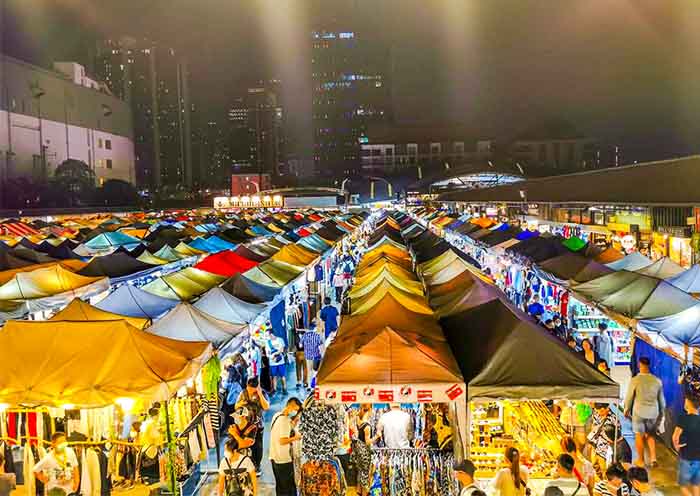
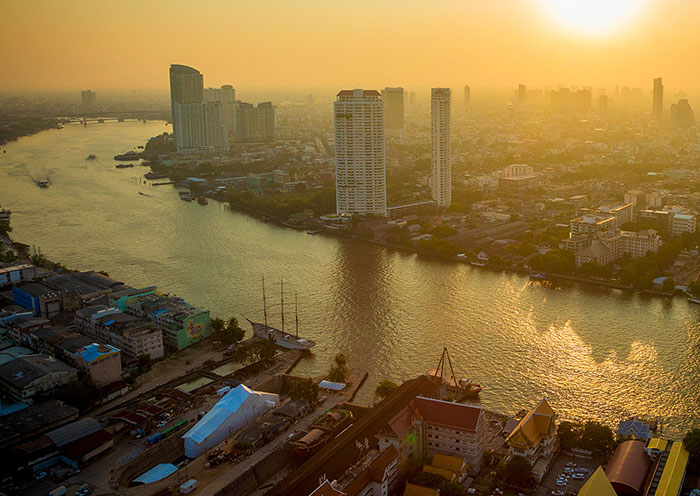
Today, you will explore the Top 5 must-visit places in Bangkok: Wat Phra Kaew, Grand Palace, Wat Pho, Wat Arun, and Chinatown. You see “Wat” means “Temple” in Thai language. You will also experience a Thai tuk-tuk, take a ferry or boat ride on the Chao Phraya River, and indulge in local food in Chinatown. This is a classic Bangkok trip, allowing you to witness 2 of the three treasures of Thailand: the jade Buddha and the reclining Buddha.
In the morning, head to Wat Phra Kaew which was built in 1782 and is located in the northeast corner of the Grand Palace in Bangkok. Covering one-fourth of the Grand Palace's area, Wat Phra Kaew is the most famous royal Buddhist temple in Thailand. This temple is renowned for enshrining one of three national treasures of Thailand, the Emerald Buddha, which is carved from a single block of Emerald. Each year, the Thailand King personally changes the Buddha's robes according to Thailand's three unique seasons. Each season changes with a certain robe: a gold robe embedded with rubies for the hot season, a gold robe embedded with sapphires for the rainy season, and a pure gold robe for the cool season. Don’t forget to check which robe the Emerald Buddha wears when you are there.
On the walls surrounding the cloisters of Wat Phra Kaew, there are a total of 178 murals (1,000m in length). Painted during the reign of King Rama I, the first monarch of the Chakri Dynasty in 18th-century Thailand (Bangkok Dynasty), the murals depict scenes from the Indian mythological epic "Ramayana," which narrates the story of King Rama joining forces with the monkey deity Hanuman to defeat the demon king Ravana and rescue the exquisite princess Sita. It is said that the story of the "Journey to the West" is also based on this legend. All the murals were created by royal court painters and the golden pigments used were made entirely from gold, resulting in exquisite and unparalleled artwork.
With the guidance of your tour guide, you can learn about the mythical creatures within Thai Buddhist architecture. For example, there is the Garuda, a mythical bird and guardian deity of Buddhism, perched on the rooftops. At the entrance of the temple, you'll find Yaksa, a protective deity, and outside the halls, there are statues of Kinaree, a mythical half-bird, half-human creature. The base of the pagoda is adorned with statues of Hanuman, the monkey deity.
After visiting Wat Phra Kaew, you can go on a visit around the Grand Palace. The Grand Palace, which was first established in 1782, was constructed as a replica of the old palace in the former capital city of Ayutthaya. It serves as a symbol of the Bangkok Dynasty and is the most well-preserved, largest, and most distinctive palace in Thailand. The Grand Palace is currently used for coronation ceremonies, royal celebrations, and hosting foreign dignitaries. From King Rama I to King Rama VIII, all the monarchs of the Bangkok Dynasty resided in the Grand Palace. However, after an assassination incident in 1946 involving King Rama VIII, King Rama IX moved to a new residence. The Bangkok Dynasty has continued to the present day, with the current monarch being King Rama X.
The Grand Palace complex consists of 22 buildings and is elegantly situated along the banks of the Chao Phraya River. The main structures are four distinct palaces (Borombhiman Hall, Amarindra Hall, Chakri Mahaprasat, Dusit Hall), showcasing the essence of Thai architecture, painting, sculpture, and interior decoration. It is often referred to as the "Encyclopedia of Thai Art". By the way, the Thai King is considered the incarnation of the god Vishnu, and Garuda is Vishnu's guardian. As a result, sculptures of the Garuda (stepping on 2 serpents) can be found on door lintels, eaves, and walls, with a total count exceeding several hundred. Witnessing the changing of the guards' ceremony is a bonus when visiting the Grand Palace.
Then, visit Wat Pho (Temple of the Reclining Buddha) which is a 10-minute walk from the Grand Palace. As the oldest and largest temple in Bangkok, Wat Pho houses the largest reclining Buddha and the highest number of Buddha images and stupas in the city. The reclining Buddha, one of three national treasures of Thailand, is 46 meters tall and 108 meters long, depicting the scene of the Nirvana of Gautama Buddha. Within the temple grounds, there is a Bodhi tree, believed to be the spot where the Buddha meditated. The temple is adorned with about 100 stupas, with the most magnificent being the four stupas which are decorated with blue, white, yellow, and green ceramic tiles. In the courtyard, you can also see many Chinese-style stone sculptures, such as door guardians and lions, which were traditionally used on ships for ballast and protection against evil spirits.
Wat Pho is regarded as Thailand's first university and is considered the birthplace of Thai medicine and traditional Thai massage. It still houses a private school established in 1957 that teaches traditional Thai medicine and offers authentic Thai massages (optional, self-pay).
In the afternoon, take a ferry or boat (cruise; optional) on the Chao Phraya River to view Wat Arun (outside view). The Chao Phraya River divides Bangkok into two parts, and many famous temples are concentrated along its banks. The Wat Arun, is one of the most prominent temples that stands on the river's edge, complementing the Grand Palace on the opposite side. (Note: Due to the hot weather and the presence of numerous steps at Wat Arun, many of our guests opt to take a boat trip and enjoy the view of Wat Arun from the outside, either from the boat itself or from the opposite side.)
Built in 1809, Wat Arun was established to honor King Taksin (郑信), the 41st monarch of Thailand (1767-1782) and a national hero. During the invasion of the Burmese army, King Taksin led the Thai people in a brave resistance, successfully driving out the Burmese and establishing the Thonburi Kingdom. To commemorate this Chinese-Thai king (from Guangdong), the temple was named Wat Arun, meaning "Temple of Dawn", as the battle took place at dawn. The main stupa of the temple stands at a height of 79 meters and is often referred to as the Thai version of the Eiffel Tower. In contrast to many other magnificent temples adorned with gold, Wat Arun stands out with its elegant white structure, attracting numerous visitors who come to rent traditional Thai costumes for photography. Situated by the Chao Phraya River, Wat Arun (Temple of Dawn) also offers a captivating view of the sunset, which is another reason why people flock to this location.
In the evening, take a Thai tuk-tuk to Chinatown Bangkok for dinner. Chinatown Bangkok (Yaowarat) is renowned as one of Bangkok's liveliest and most bustling commercial areas, with reportedly 70% of the city's gold shops located in Chinatown. The entire street of Chinatown stretches for about 2 km, lined with numerous shops, and thousands of businesses proudly displaying eye-catching Chinese signs. You may have watched the film Detective Chinatown, which was filmed in Chinatown Bangkok which has a history of over 200 years. You can search for the hidden shops that appeared in the film while enjoying the food in Chinatown, a haven for foodies. The restaurants and food stalls here provide a rich selection of Chinese, Thai, and other Asian delicacies. From classic pad thai to exotic grilled meats, there's something for everyone.
Warm Tips:
- When entering the Grand Palace or temples, it is prohibited to wear shorts or skirts that do not cover the knees. Shoulders and midriffs should be covered, and clothing should not be excessively tight or have holes.
2.Upon entering a temple, remove your hat and shoes. Photography is prohibited inside the temple halls. The use of drones is strictly prohibited within the royal grounds.
- Do not enter unauthorized areas or areas marked with warning signs. Unauthorized photography or videography is prohibited in restricted areas.
- The lights of Wat Arun usually turn on around 7 PM. For sunset, it is recommended to arrive Wat Arun around 5:30 PM, do double check with your guide for the sunset time based on your travel schedule. It is said that the best spot to capture the beauty of Wat Arun is in the alley across from Wat Pho, where a restaurant is located.
- Opening Hours for Temples (Wat):
Wat Phra Kaew : 8:30 AM - 3:30 PM
Wat Pho: 8:00 AM - 6:30 PM
Wat Arun : 8:00 AM - 6:00 PM
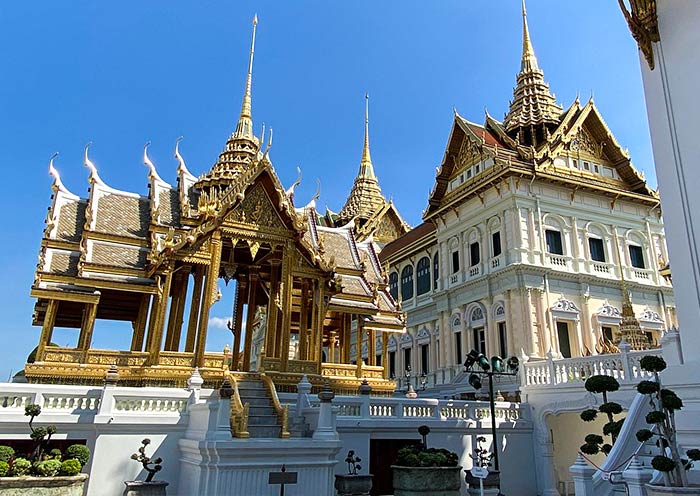
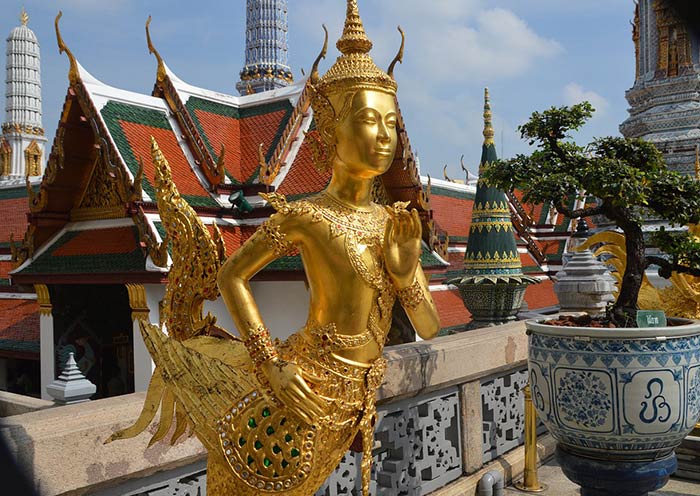
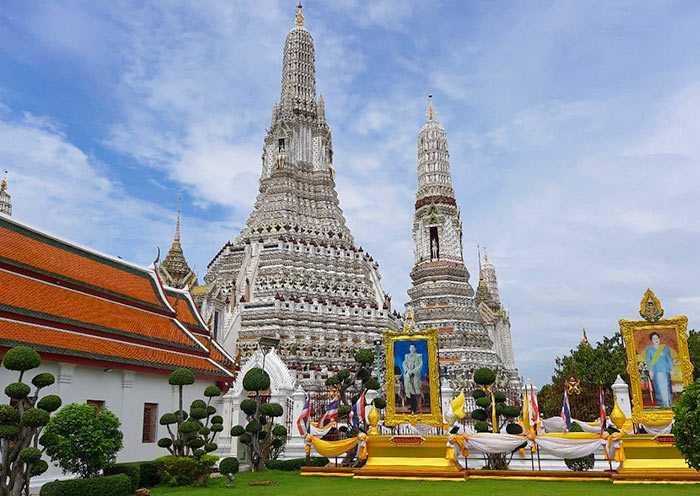
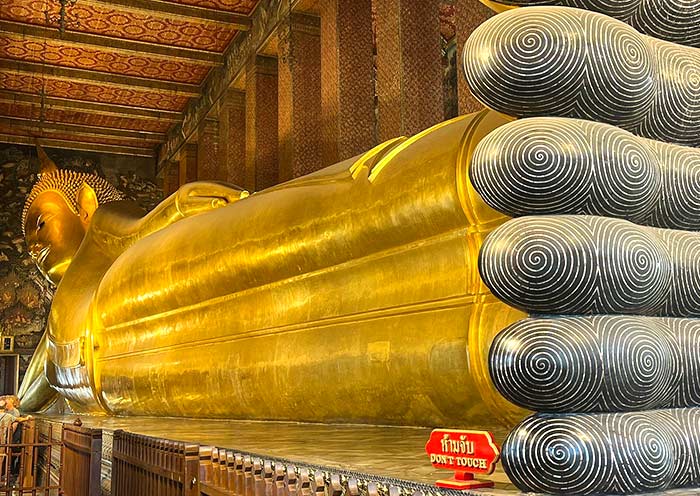
After breakfast, head to airport for your flight to Chiang Mai (1h15m). The Chiang Mai Airport is only 3km away from the Chiang Mai Ancient City. Check-in at your hotel in Chiang Mai and have a good rest.
Chiang Mai is the second largest city in Thailand and was the capital of the independent Lanna Kingdom until 1558, the first kingdom in Thai history. It is renowned for its rich history, numerous temples, and unique culture. Chiang Mai is also known as the "Rose of the North" and offers a slower pace of life. People from all over the world flood here to get close to elephants through various Elephant Sanctuaries, experience local life through Thai Cooking Classes, and enjoy a vibrant atmosphere through its Walking Street Market and Night Bazaars around Chiang Mai Old City.
If time permit, you can spaned Half day Citywalk in Chiang Mai Old City (Optional) to explore Chiang Mai’s stunning Temples (Wat Phra Singh, Wat Chedi Luang, Wat Phan Tao), vibrant culture, and a laid-back atmosphere. It's a place for Architecture and culture lover. After your Chiang Mai trip, you may understand why Chiang Mai was Teresa Teng's (邓丽君) favorite city.
For the Half day Chiang Mai Old City tour (Optional), you will enter Chiang Mai Old City by the Tha Phae Gate, which is the landmark of Chiang Mai. The Old City is a square measuring 1.5 kilometers in length and 1.5 kilometers in width, surrounded by a moat. It is the most complete and well-preserved city gate, constructed in the early 13th century, remaining from the ancient walls that once surrounded the Old City. It served as a defensive structure against invaders and a gateway to the Lanna Kingdom. The area around the gate is always bustling with activity, especially during festivals like Loy Krathong and Yee Peng Lantern Festival (Sky Lantern Festival; Nov. or Dec.).
There are around 30 temples within the Chiang Mai Old City walls today. You will visit Wat Phra Singh, one of the three major temples in Chiang Mai, is the largest and most revered temple in the ancient city. It was originally built in 1345 when the fifth king of the Mangrai dynasty constructed a stupa to enshrine his father's ashes. Over time, it was expanded to its present scale. The temple, named after a famous Buddha image called Phra Singh (Lion Buddha), showcases stunning Lanna architecture, a unique blend of Thai, Burmese, and Mon styles. In the center of the temple stands a large golden pagoda, approximately 20 meters high, built in the 16th century, which is said to house the relics of Gautama Buddha. Wat Phra Singh is also one of the main locations for locals to celebrate the Songkran Festival (held annually from April 13th to 15th, Thai New Year).
Then, visit Wat Chedi Luang (Temple of the Big Stupa) which was located at the center of Chiang Mai Old City. The temple has a history of over 600 years and holds the same esteemed status as Wat Phra Singh, making it one of the three major temples in Chiang Mai. The centerpiece of the temple is the Lanna-style square-shaped great stupa, originally standing at a height of 98 meters, which was once the tallest structure in northern Thailand. It was built by King Saen Muang Ma of the Lanna Kingdom in 1411 AD. Throughout history, it has endured wars, and earthquakes, leaving only the 42-meter-high base and the ground level, bearing witness to the storied and profound history of Chiang Mai. Currently, new Buddha images have been placed on the four sides of the great stupa. On the southern wall, there are six elephant sculptures, with five of them being replicas restored with cement, and only the rightmost one being the original piece that has been preserved. It is worth seeing.
Later, hop to Wat Pun Tao which is 100 meters away from Wat Chedi Luang. Wat Phan Tao, also known as the Teakwood Temple, is entirely constructed from teakwood provided by the royal family. With a pure Lanna-style design, built in the late 1870s, making it a treasured sanctuary within the city of Chiang Mai. It is also one of the few remaining wooden structures in the area. Every year during the Yi Peng Lantern Festival (Mid November, Thai Lantern Making & Releasing), Wat Phan Tao holds a lighting ceremony, attracting photographers from both domestic and international locations.
If time permit, you can visit Wat Chiang Man, the oldest temple in Chiang Mai. It is the first Buddhist temple in the ancient city and was personally supervised and built by King Mengrai, the first king of the Lanna Kingdom, in 1297.
Free Time Ideas for Chiang Mai Night Markets:
1.Chiang Mai Night Bazaar (Chang Klan Road; Everyday: 5pm-12pm)
2.Tha Pae Sunday Walking Street on Ratchadamnoen Road (1km, Sunday only, 5pm-10pm)
3.Wua Lai Walking Street on Wua Lai Road (Saturday only, 5pm-11pm)
4.Do double-check with your local guide for the market opening time.
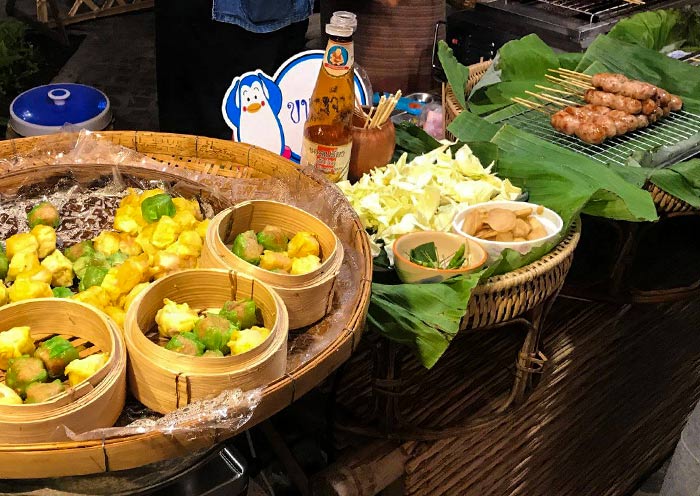
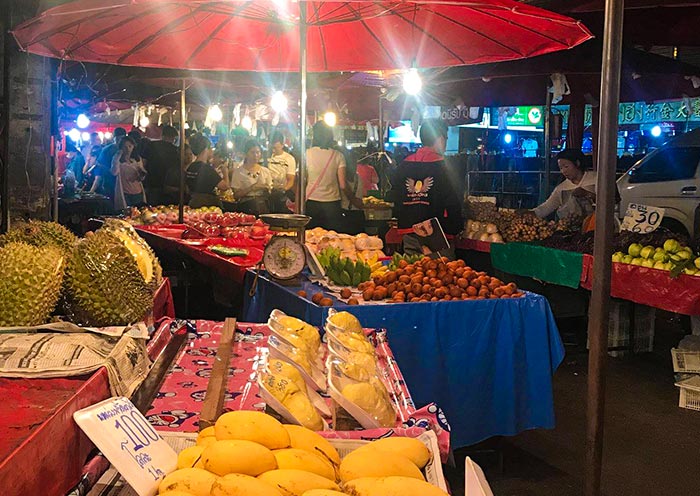
Chiang Mai is a popular destination to see elephants up close in a wide open space. Today, you will enjoy a half-day morning visit to Elephant Jungle Sanctuary. Afterward, you can freely relax for the rest of the day, perhaps by taking a Chiang Mai Cooking Class (15:30-19:00; optional) or trying out Lila Thai Massage near the Tha Pae Gate (optional). This offers a delightful opportunity to experience the real local life in Chiang Mai.
Upon arrival at the Elephant Jungle Sanctuary, savor a welcome snack while sipping tea or coffee and learning about elephants during an informative introduction. Get involved in the preparation of natural dietary supplements for the elephants before meeting these gentle giants. Feed them, administer supplements, and hear their inspiring stories while capturing memorable photos in their natural environment. Experience a unique mud spa session with the elephants, followed by a refreshing swim and shower in the specially constructed outdoor "Elephant Shower". You may even have the chance to engage in a fascinating "DIY Poop Paper" recycled paper activity.
After learning about the elephants, observe the elephants, feed the elephants, shower the elephants, enjoy a delicious lunch of traditional Thai cuisine and seasonal fruit, head back to your hotel, and enjoy your relaxing day freely. Overnight in Chiang Mai.
Warm Tips:
1.Book in advance: Elephant sanctuaries are popular attractions, so it's important to book your visit in advance, especially during peak season.
2.Wear appropriate clothing: You'll likely be doing some walking and getting muddy, so wear comfortable shoes and clothes that you don't mind getting dirty.
3.Respect the elephants: Always follow the instructions of your guide and be gentle and respectful when interacting with the elephants.
Free Time Idea around Chiang Mai Old City:
1.Half-day Thai Cooking Class in Chiang Mai: There are many Chiang Mai Cooking Schools that offer various Cooking Classes (appetizer, stir-fry, dish, soup, curry, dessert), from farm to table or from market to table, enjoy the famous Thai Dishes cooked by yourself (Thai tea, Tom Yam Soup, Pad Thai and more).
2.Try Chiang Mai Women's Correctional Institution Lila Thai Massage (Optional, self-pay). It is located near the Tha Pae Gate.
3.Foodie Experiences in Chiang Mai: Explore local markets around the Chiang Mai Ancient City such as Warorot Market (Everyday: 4am-6pm), Jing Jai Market (Everyday: 8:30am-9pm), Coconut Market (Saturday/Sunday/Monday, 8am-2pm), White Marke (Nimmanhaemin Road; 3pm-10pm; Closed on Weds & Thur.). Do double-check with your local guide for the market opening time.
Warm Tips:
1.There are many Elephant Sanctuaries in Chiang Mai, if you prefer Elephant Nature Park (Hands-off), do ask us to check if it is available, especially during the high season.
2.If you are interested in local markets or Night Bazaars, be sure to note that some markets are only open on Saturday or Sunday. Ask your guide for advice.
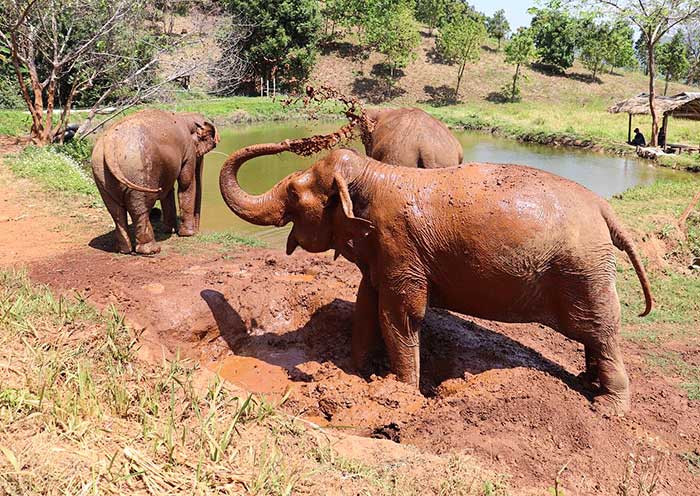
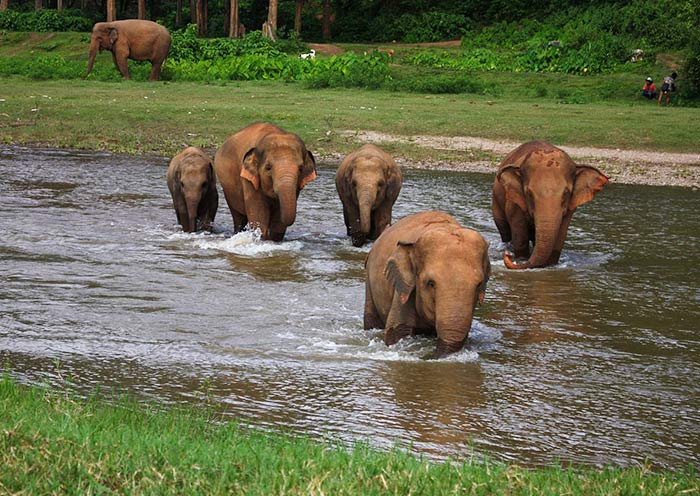
On this day, you will be escorted to the airport for a flight to Siem Reap in Cambodia.
Welcome to Siem Reap, your gateway for the Temples of Angkor. When you arrive at Siem Reap–Angkor International Airport (SAI), your tour guide and driver will meet you at the exit and then escort you to the hotel in downtown Siem Reap.
Siem Reap is a city in northwestern Cambodia, best known as the gateway to the Temples of Angkor, including the iconic Angkor Wat, which is just 6 kilometers away. The city has transformed into a major tourist hub, with a diverse range of accommodations, and bustling nightlife with numerous restaurants, bars, and night markets.
On this day, you will have time to explore freely on your own.
Optional Activities:
In the evening, you will enjoy a sumptuous welcome dinner buffet. While dining, you'll be treated to a captivating Khmer traditional dance performance, featuring elegant movements and vibrant costumes set to melodious traditional music.
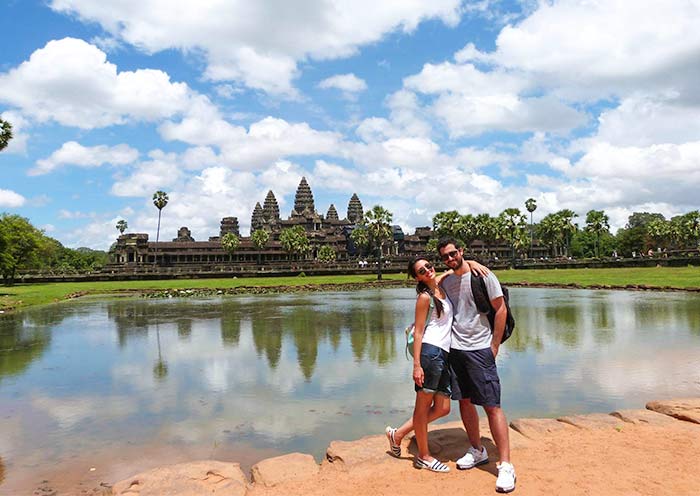
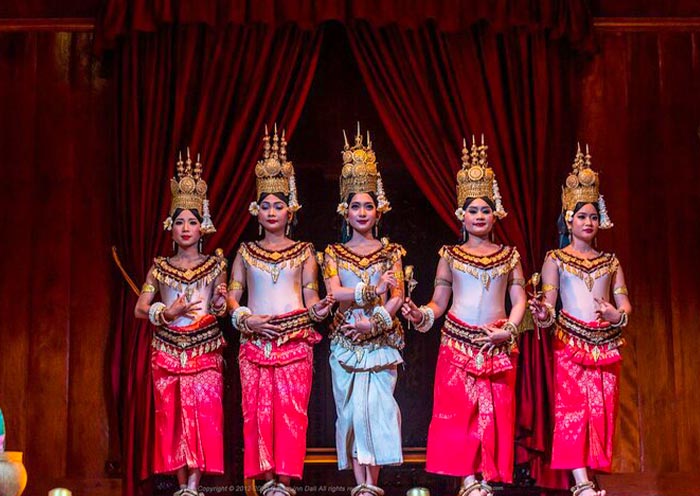
Designated as a UNESCO World Heritage site, Angkor Archaeological Park is a vast and impressive complex. It spans an area of roughly 400 square kilometers and contains the magnificent remains of the various capitals of the Khmer Empire, which flourished from the 9th to the 15th centuries.
Today, we will guide you through an exploration of some of the most iconic temples and structures within the park, including the majestic Angkor Wat and Angkor Thom complexes, and the enchanting Ta Prohm.
Scenic Spots You will Pass:
Sunrise → Angkor Thom → Ta Prohm → Angkor Wat → Phnom Bakheng Sunset → Get back to your Hotel
Start your day early with a sunrise viewing at Angkor Wat. Arrive at Angkor Wat in time to find a good spot to watch the sunrise. Tips: The sun rises between 5:30 AM and 6:30 AM, depending on the time of year. The silhouette of Angkor Wat’s iconic spires stands sharply against the lightening backdrop, creating a stunning contrast that slowly fills with color. The temple's vast moat reflects this magical scene, doubling the beauty in a perfect mirror image that enhances the surreal atmosphere. After the sunrise, head back to your hotel for breakfast and a short rest.
After breakfast, head to Angkor Thom, the last and most enduring capital city of the Khmer empire. It was established in the late 12th century by King Jayavarman VII in the late twelfth century. Angkor Thom means "Great City" in Khmer. Set over 10 square kilometers, the aptly named last great capital of the Khmer empire took monumental to a whole new level.
Enter through the South Gate and proceed to the Bayon Temple at the city's center. This temple is known for its numerous smiling faces carved into its towers. Each of its 54 Gothic towers is decorated with 216 gargantuan smiling faces of Avalokiteshvara. The temple also features 1.2km of extraordinary bas-reliefs, incorporating more than 11,000 figures. Take your time to marvel at these detailed bas-reliefs, which portray historical events and scenes from daily life in the empire. A short walk northwest from the Bayon will bring you to the Baphuon Temple. This temple, which predates Angkor Thom, was originally a Hindu temple dedicated to Shiva.
Next, visit the Terrace of the Elephants. King Jayavarman VII used this terrace as a viewing platform to observe his victorious returning army. You'll find it adorned with carvings of elephants and other animals, providing excellent photo opportunities. Continue to the nearby Terrace of the Leper King. This 7-meter high laterite platform features multiple tiers of meticulously carved walls depicting nagas (serpents), demons, and various mythical beings. Conclude your visit to Angkor Thom by exiting through the Victory Gate on the east side of the city.
Later, proceed to Ta Prohm (Jungle Temple). Its appeal lies in the fact that, unlike the other monuments of Angkor, it has been swallowed by the jungle, and looks very much the way most of the monuments of Angkor appeared when European explorers first stumbled upon them. It was also featured in the movies "Tomb Raider" and “Raiders of the Lost Ark”, which adds to its popularity. After exploring Ta Prohm, enjoy a relaxing lunch at one of the local restaurants nearby.
In the afternoon, return to Angkor Wat for a more detailed tour of this iconic temple. Uniquely designed with a westward orientation, Angkor Wat is best viewed in the afternoon light. Angkor Wat, the largest monument of the Angkor group and the best preserved, is an architectural masterpiece. Its perfection in composition, balance, proportions, relief, and sculpture make it one of the finest monuments in the world.
Angkor Wat is surrounded by a vast moat, 190 meters wide, forming a rectangle of 1.5 by 1.3 kilometers, which symbolizes the mythical oceans surrounding Mount Meru, the center of the universe in Hindu cosmology. Visitors can enter through the west-facing main gate, which leads directly into a long causeway lined with naga balustrades. Spend time in the galleries which feature extensive bas-reliefs depicting epic stories such as the Battle of Kurukshetra from the Mahabharata, the Judgment by Yama, the Hindu god of death, and scenes of heavenly nymphs (Apsaras) and everyday life in the Khmer Empire. At the heart of the temple complex is the central sanctuary surrounded by four smaller towers, forming a quincunx. The central sanctuary, rising majestically above the forested landscape, symbolizes the mythical Mount Meru and offers a unique perspective on the temple’s layout and the geometric precision with which it was built. Climb up to the central tower, a privilege that offers not only a closer view of the intricate lintel carvings and sculpted friezes but also panoramic views of the entire complex and its surroundings.
If you have enough energy, consider climbing up to Phnom Bakheng Hill to enjoy the sunset view. The climb takes about 15-20 minutes. Arrive early as this popular spot can get crowded at sunset. From here, watch the sky change colors over the main temples of Angkor and the surrounding forests - a perfect end to a day of exploration.
After the tour, drive back to your hotel. Stay overnight in Siem Reap.
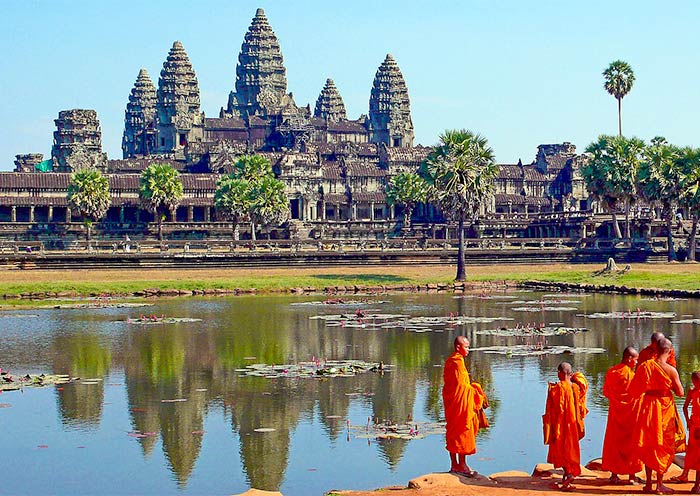
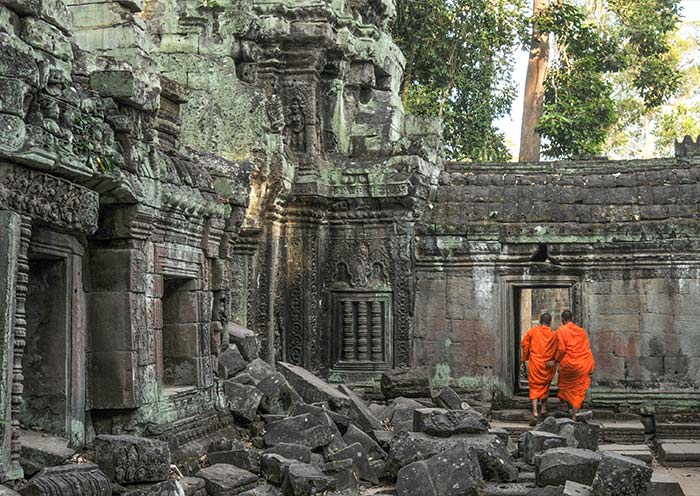
On your third day exploring Angkor Archaeological Park, take a journey beyond the main temple complexes to discover the enchanting and less frequented outlying temples. Banteay Srei, renowned for its intricate carvings and unique pink sandstone construction, and Beng Mealea, a temple shrouded in mystery and overtaken by the jungle, offering a more adventurous experience.
After breakfast, head northeast from Siem Reap to Banteay Srei, which is about 35 kilometers away, approximately an hour's drive.
Your first stop is Banteay Srei, often celebrated as the “Jewel of Khmer Art”. This 10th-century temple is dedicated to the Hindu god Shiva. Banteay Srei stands apart for its small size and the exquisite quality of its ornate carvings, which are the finest found in Cambodia. The stone's pink hue and the elaborate decorative wall carvings of deities and mythical creatures make it a photographer's paradise.
After exploring Banteay Srei, make your way to Beng Mealea, situated about 50 kilometers further, approximately an hour's drive. The drive itself offers a scenic view of the Cambodian countryside. Have lunch at a local restaurant nearby.
Explore Beng Mealea, a temple that offers a completely different experience from the more restored sites around Angkor. Much of Beng Mealea has been reclaimed by the jungle, with trees and vines breaking through the stone blocks. The temple's untouched appearance makes it feel like you're discovering it for the first time. As you walk through its corridors and climb over rubble, you'll discover hidden carvings and collapsed galleries. The nature-infused ruins will leave you marveling, reminiscent of an Indiana Jones adventure.
After exploration, head back to Siem Reap (about 1.5 hours’ drive). Stay overnight in Siem Reap.
Tips for Angkor:
- The Cambodian climate can be very hot, especially around midday. Starting early will help you avoid the hottest part of the day and the largest crowds.
- Shoulders and knees should be covered when visiting the temples as a sign of respect. Lightweight, breathable clothing that covers these areas is ideal.
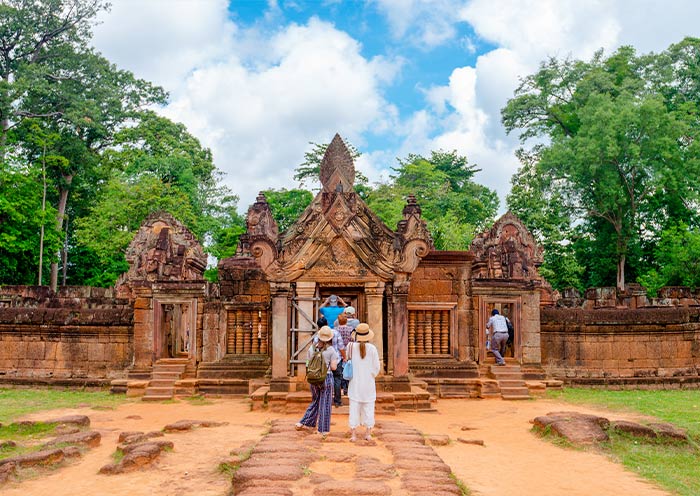
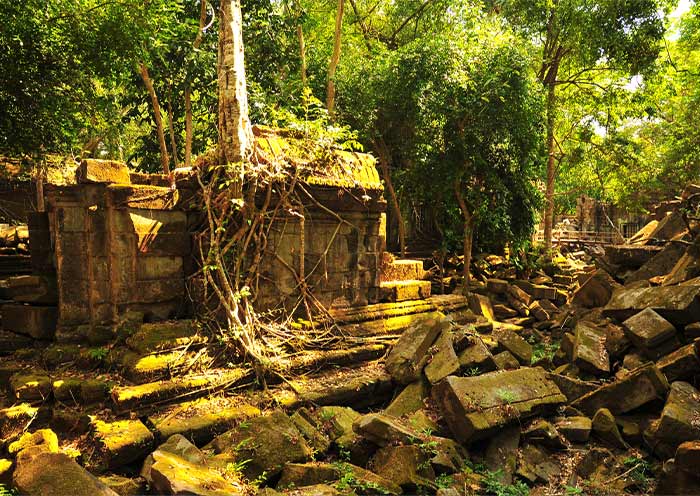
This morning, you will be transferred from Siem Reap for a flight to Ho Chi Minh City (about 1.2 hours). Welcome to Ho Chi Minh City! Formerly known as Saigon, Ho Chi Minh City is the largest city in Vietnam. Located in southern Vietnam, it's a well-blended mix of historical significance and modern dynamism.
Upon arrival at Tan Son Nhat International Airport in Ho Chi Minh City (approximately 6.5km from downtown), your local guide will meet you and escort you to your hotel. In the afternoon, you'll take a half-day tour exploring Ho Chi Minh City's rich history, culture, and vibrant modern life.
Our first stop is the Reunification Palace, also called the Independence Palace, a captivating architectural marvel that once served as the residence of the South Vietnamese President. Here, you can witness the iconic image of North Vietnamese tanks storming the palace gates, a defining moment that marked the end of the Vietnam War in 1975. Next, we head to the War Remnants Museum, a poignant and powerful testament to the realities of the Vietnam War. Prepare to be moved by exhibits showcasing artifacts, photographs, and weaponry that tell stories of war and resilience.
Next on your itinerary is Nha Tho Tan Dinh, also known as the Pink Church. This vibrant landmark stands out with its unique hue, making it instantly recognizable and a popular spot to capture stunning photos. Step back in time as you learn that Nha Tho Tan Dinh was built in the late 19th century, making it one of the oldest churches in Ho Chi Minh City. Admire the fascinating blend of Romanesque and Gothic styles in its architecture, with two grand bell towers flanking the entrance. Snap some cool pictures outside to remember your visit!
Then, take a short stroll and be transported back in time at the Central Post Office, a majestic building constructed in the early 20th century. Take a moment to appreciate the impressive facade with its wrought-iron details and colorful mosaic floors. (Optional Experience: To create a lasting memory of Vietnam, send postcards to your loved ones from this historic landmark.)
Later, experience Saigon's famed coffee culture by visiting the Coffee Apartment, and culminate your exciting day with a captivating immersion into the vibrant atmosphere of Ben Thanh Market. Explore a world of local crafts, and don't miss the chance to tantalize your taste buds with the incredible array of Vietnamese street food - a sensory explosion not to be missed!
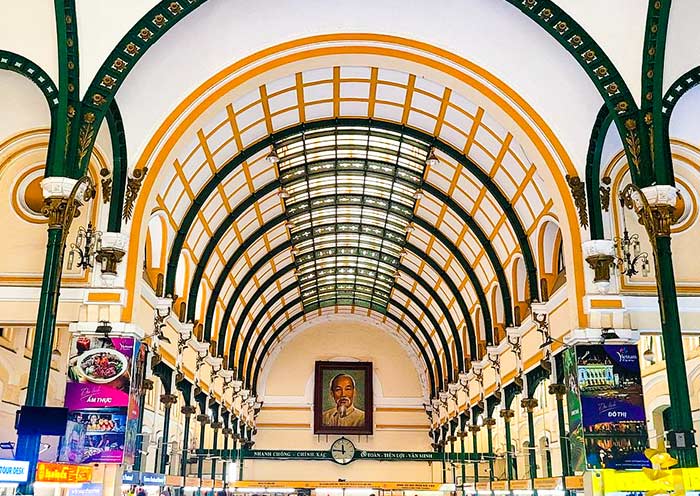
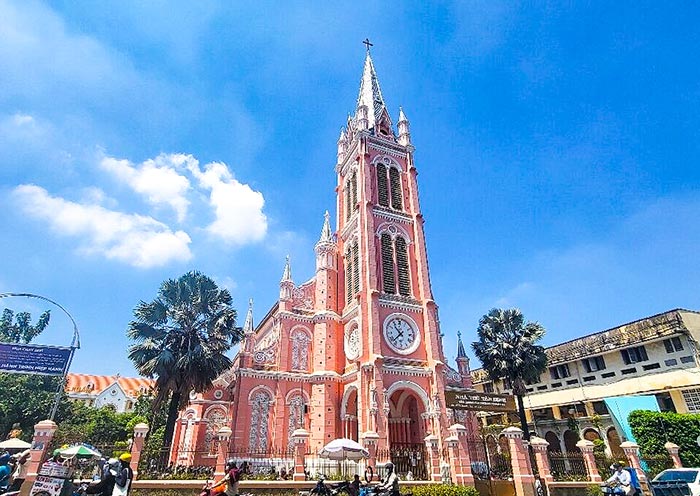
After breakfast, spend a full day exploring the Mekong Delta at a relaxing pace. Mekong Delta, located in southwestern Vietnam, is a vast maze of rivers, canals, islands, and rice paddies formed by the Mekong River as it empties into the sea. Known as the "rice bowl" of Vietnam, the Delta is a major agricultural hub, producing a significant portion of the country's rice and fish.
Start from Ho Chi Minh City, you will pass through green rice fields and small villages to arrive in beautiful rural My Tho. Upon arrival, your first stop is Vinh Trang Pagoda. Built in the mid-19th century, Vinh Trang is renowned for its stunning architecture, showcasing a harmonious fusion of Vietnamese, Chinese, and Khmer influences. You will be amazed by the outstanding architecture, meticulously carved columns with intricate details, and visits to the Statue of Maitreya Buddha, Statue of Amitabha Buddha, Reclining Buddha statue, and 7-story tower.
Later, head to the nearby pier to board a traditional Mekong Delta boat for a scenic cruise along the majestic river. As you explore, lush greenery and bustling river life will captivate you. Glide past the Turtle, Dragon, and Phoenix Islets, eventually arriving at the enchanting Unicorn Islet. And, delve deeper into the Delta's heart with a ride on a traditional sampan boat through narrow waterways lined with coconut palms. This intimate experience allows you to appreciate the unique ecosystem and the local way of life firsthand. Stop at a bee farm to savor honey tea, taste local fruits, and immerse yourself in traditional music performed by the villagers. Learn about their daily lives and gain a deeper understanding of the region's culture. Enjoy a local lunch with Vietnamese dishes.
After lunch, take a boat trip to Ben Tre, known as the coconut kingdom, a charming town famous for its coconut plantations and fruit orchards. Enjoy a leisurely bike ride through the countryside and learn about how coconut products are produced in the region. Visit a coconut candy workshop.
After the memorable tour, get back to Ho Chi Minh City.
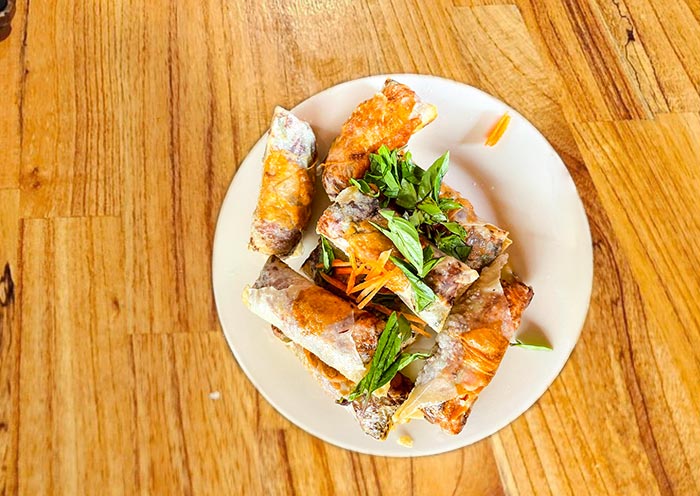
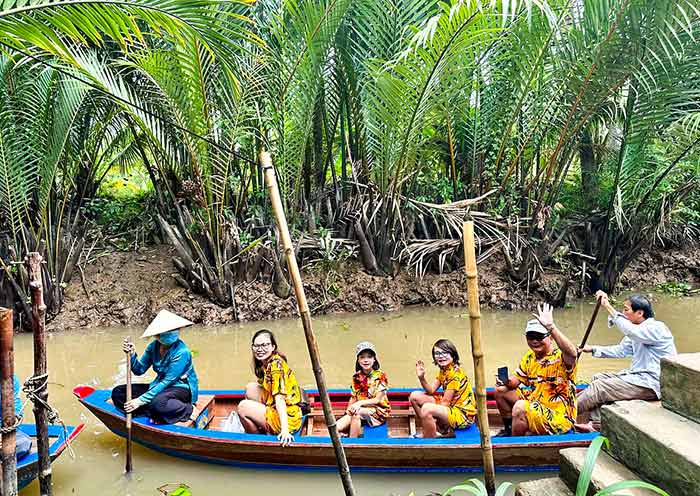
On this day, you will be escorted to the airport for a flight to Da Nang (about 1h 20m).
Upon arrival in Da Nang, you'll be met by your tour guide and whisked away for a scenic 1-hour drive to Hoi An. Welcome to Hoi An, a UNESCO World Heritage Site famed for its enchanting Hoi An Ancient Town! This charming town boasts a unique blend of architectural styles, reflecting Vietnamese, Chinese, Japanese, and European influences. Your guide will then take you to your hotel in Hoi An for check-in. The rest of the day is yours to explore at your own pace!
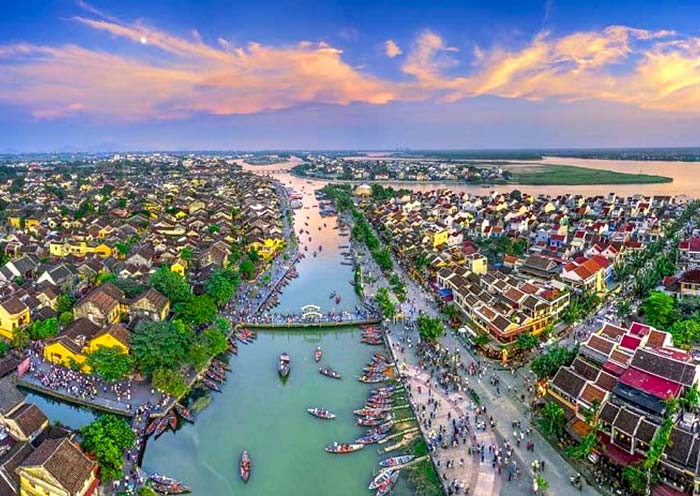
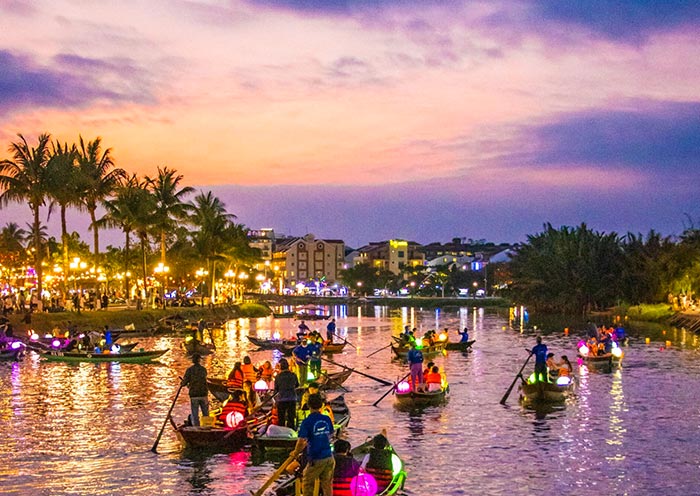
After breakfast, your tour guide will pick you up at your hotel for a half-day excursion to Cam Thanh village, a charming fishing village nestled amidst the Cam Thanh Water Coconut Forest.
The basket boat's history can be traced back over 2,000 years to the Cham people who settled in this area. Originally designed for fishing in shallow waters, these unique Vietnamese watercraft are still used today.
Upon arrival, prepare to take an exciting 45-minute to 1-hour adventure on a traditional basket boat. Crafted from bamboo and woven palm leaves, these boats will take you on a journey through the heart of the verdant coconut palm forest. As you glide through the serene waterways, surrounded by lush coconut groves and vibrant rice paddies, soak in the peaceful atmosphere. Witness the unique ecosystem teeming with diverse flora and fauna. Learn about the local community's commendable efforts in preserving this remarkable environment.
Other activities and experiences include:
- Dance with the locals in the basket boat;
- Try your hand at casting traditional nets and basket traps;
- Catch crabs or snails by the riverbank.
After your exciting excursion to Cam Thanh village, you'll return to Hoi An where you can savor a delicious lunch of authentic Vietnamese cuisine. This afternoon, enjoy a captivating exploration of Hoi An Ancient Town with your knowledgeable guide.
Hoi An Ancient Town, a UNESCO World Heritage Site, is an exceptionally well-preserved example of a Southeast Asian trading port dating from the 15th to the 19th centuries. The complex boasts 1,107 timber-frame buildings. It represents a fusion of indigenous and foreign cultures (principally Chinese and Japanese, with later European influences) that combined to produce this unique, well-preserved town. Walking through Hoi An is like stepping back in time. Our guide will lead you to some of the town's most significant landmarks, including the iconic Japanese Covered Bridge, the ornate Fujian Assembly Hall, and the historic Tan Ky House (Old House of Tan Ky). After, explore the bustling Hoi An market and delve into some of the delicious local offerings, like Cao Lau (Pork Rice Noodles), Com Ga (Chicken Rice), Banh Mi (Vietnamese Baguette), White Rose Dumplings (Banh Bao Vac), and Mi Quang (Turmeric Noodle Soup).
Optional Night Time Ideas in Hoi An Ancient Town:
- As dusk falls, the town comes alive with soft glow of lanterns. Take a leisurely stroll through the narrow alleys and admire the vibrant colors and intricate designs.
- Enjoy a relaxing boat ride on the Thu Bon River as you take in the illuminated riverside and the Japanese Covered Bridge.
- Explore the bustling Hoi An Night Market, where you can find a plethora of local specialties and souvenirs.
After the tour, you’ll be transferred back to the hotel, and then you can have the rest of the day to yourself.
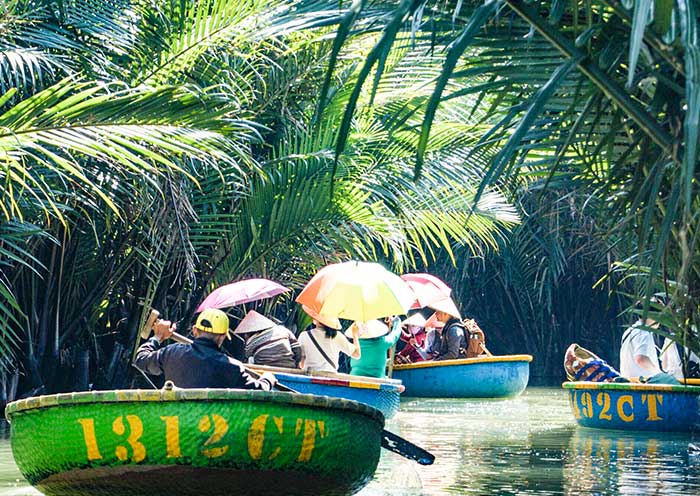
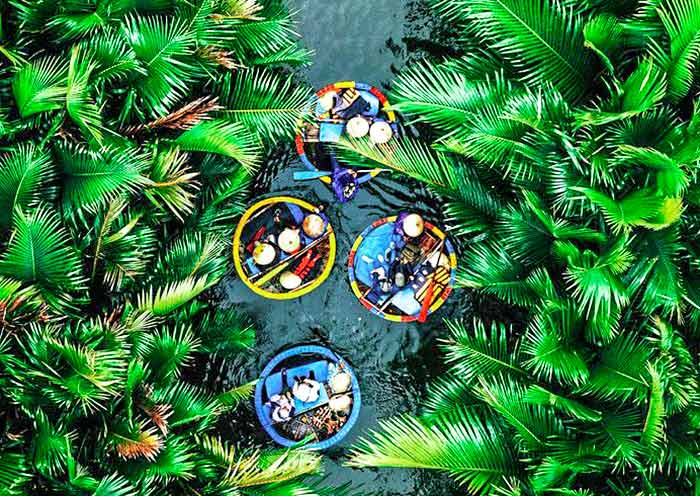
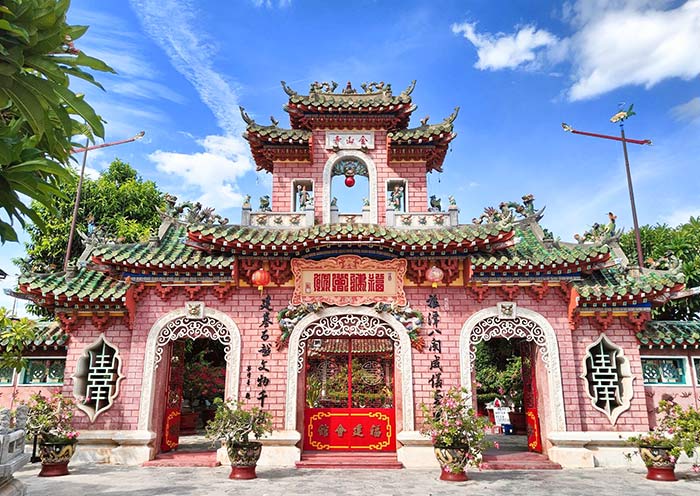
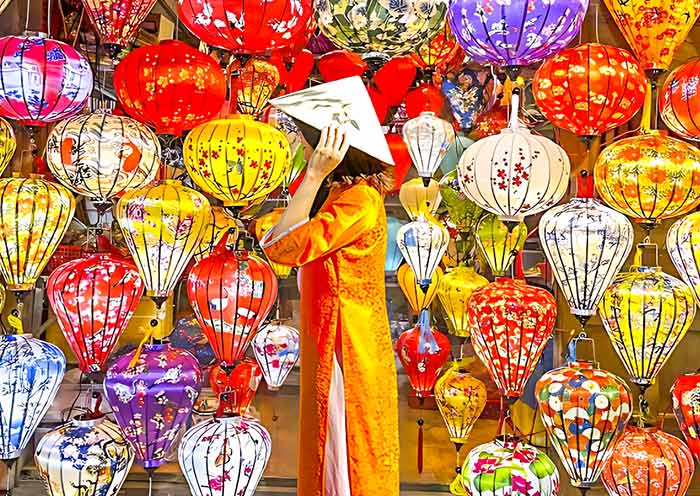
This morning, you will be transferred from Hoi An to Da Nang for a flight to Hanoi (about 1h 20m).
Welcome to Hanoi, the capital city of Vietnam! Upon arrival at Noi Bai International Airport, you will be met by our local guide and driver. Then, we will take you to your carefully selected hotel in Hanoi. The rest of today is free for you to explore this old and charming city at your own pace.
Hanoi, located in northern Vietnam, boasts a rich history dating back over 1,000 years. It showcases a blend of Vietnamese, Chinese, and French influences. Renowned for its diverse culinary scene, Hanoi is considered a food lover's paradise to taste Vietnamese cuisine. The city is famous for its street food, where you can savor an array of local specialties.
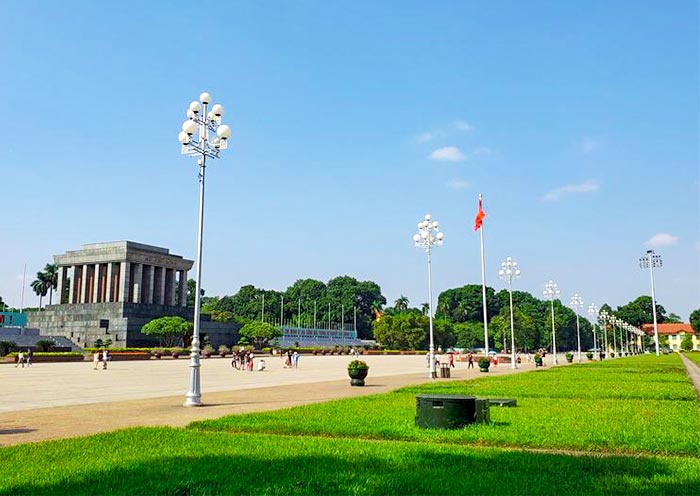
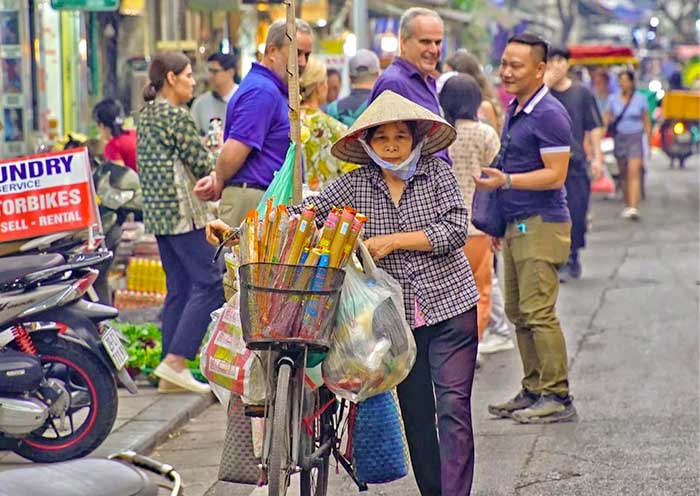
After breakfast, your guide will pick you up at your hotel for a delightful day exploring Hanoi City. This city holds a unique charm despite not being the most modern. Its character lies in the captivating blend of Vietnamese, Chinese, and French influences, all woven together with the city's authentic and bustling local life within its old alleyways. Indulge in the delicious local street food for a taste of true Vietnamese flavors.
Our first stop is a tranquil escape to Tran Quoc Pagoda, nestled amidst the picturesque West Lake. It is the oldest Buddhist temple in Hanoi, with a history dating back over 1500 years. As you approach, you'll be greeted by the sight of the iconic 11-story lotus tower, a symbol of the pagoda. Step inside the main hall and explore its beauty, where intricate carvings and frescoes adorn the walls. Be sure to admire the serene lotus pond, adding to the pagoda's peaceful atmosphere.
Later, head to the Ho Chi Minh Mausoleum, situated in Ba Dinh Square. The mausoleum serves as the final resting place of Ho Chi Minh (Uncle Ho), the revered leader of Vietnamese independence and the founding father of modern Vietnam. Dress respectfully and visit the mausoleum to pay homage to this iconic figure and learn about his immense role in shaping the nation. If you're lucky, you might witness the solemn and precise military honor guard ceremony. (Note: 1. The Mausoleum closes from Sep. 4 to Nov. 4 every year. 2. The surrounding sites include the Presidential Palace, Ho Chi Minh's Stilt House, and the Ho Chi Minh Museum.)
Afterward, enjoy a short walk to visit the One Pillar Pagoda. Prepare to be amazed by its distinctive shape: the main building sits atop a single stone pillar, resembling a lotus flower blossoming from a pond. Legend has it that Emperor Ly Thai Tong dreamt of receiving a son from the Buddhist goddess of mercy, Quan Am Bo Tat, on a lotus flower. The pagoda's construction served as a way to express his gratitude. Later, visit the Temple of Literature, Vietnam's first university and a site dedicated to Confucianism.
This afternoon, delve into Vietnam's fascinating history at the Vietnam National Museum of History. Here, you'll gain a comprehensive understanding of Vietnam's past, from prehistoric times to the 20th century, through a captivating display of artifacts. Witness ancient bronze drums, intricate ceramics, and powerful imperial regalia, each piece whispering stories of Vietnam's remarkable evolution.
Later, head to Hoan Kiem Lake, also known as Lake of the Restored Sword, a shimmering jewel in the heart of Hanoi. Take a leisurely stroll along the lake's perimeter, enjoying a view of the iconic Turtle Tower. Legend tells the tale of Emperor Le Loi returning a magical sword to a giant turtle residing in the lake, thus giving rise to the name "Lake of the Returned Sword." Afterwards, visit Ngoc Son Temple, dedicated to various Vietnamese historical figures and the revered Confucian scholar Van Xuong.
Afterward, immerse yourself in the local life of Vietnam with a unique and fun cyclo tour! For about an hour, you'll travel at a slow and leisurely pace through the iconic Old Quarter of Hanoi. A cyclo, a traditional three-wheeled bicycle taxi, will be your chariot for exploring the narrow streets. Cruise through the famed 36 Streets (each named after a specific trade) and pass by iconic landmarks like Dong Xuan Market, St. Joseph's Cathedral, and the Hanoi Opera House. This is a fantastic way to experience the Old Quarter's charming and vibrant atmosphere firsthand! Don't miss the chance to savor the delicious variety of Vietnamese street food and local dishes!
Optional Water Puppet Show: Immerse yourself in a unique Vietnamese tradition by catching a water puppet show in the late afternoon or evening! Dating back to the 11th century, these captivating performances use colorful puppets manipulated on a water stage to depict folktales and historical events. A highly-recommended venue for this experience is the Thang Long Water Puppet Theatre.
After the tour, be escorted to your hotel in Hanoi.
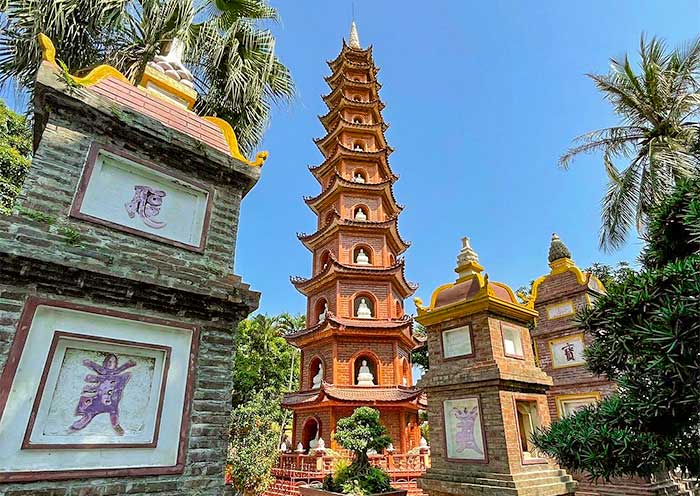
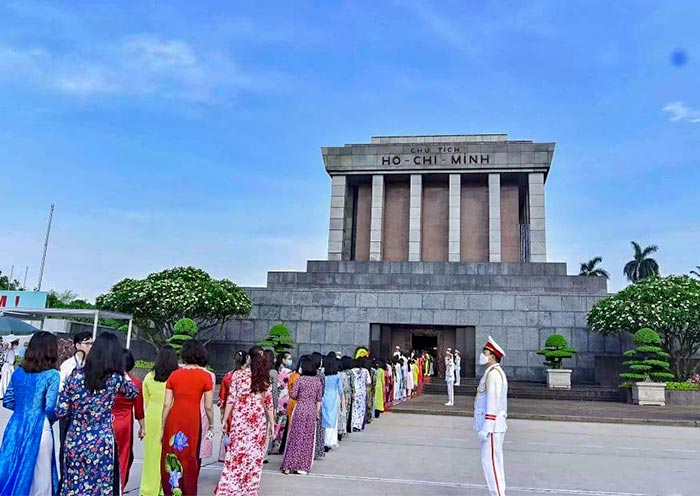

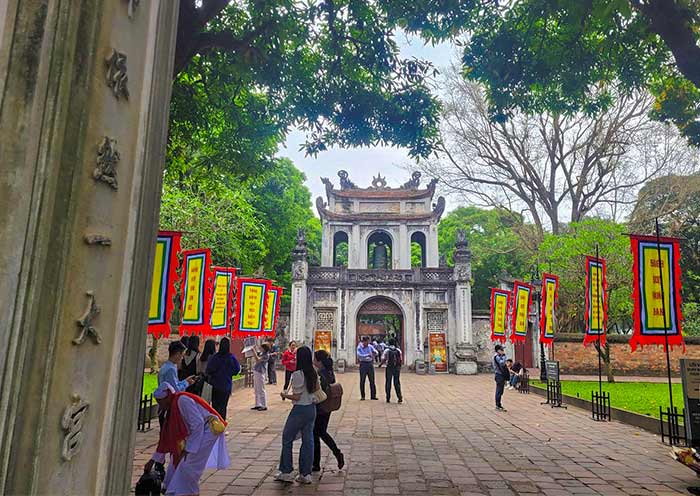
Halong Bay, A UNESCO World Heritage Site, boasts thousands of majestic limestone formations, sculpted by nature over millions of years. Reputed as “Guilin on the Sea”, these emerald islands rise dramatically from crystal-clear turquoise waters, creating a breathtaking seascape. Thanks to its dramatic cliffs, shimmering turquoise waters, and over 1,600 limestone islands and islets, Halong Bay is one of the most popular destinations in northern Vietnam. A cruise offers the best way to experience its unparalleled beauty.
Morning:
This morning, between 8:00 AM and 8:30 AM, the cruise company's shuttle bus will pick you up in Hanoi's Old Quarter area. Hop aboard and prepare to be whisked away on a scenic 2.5-hour drive (147 km) to stunning Halong Bay!
Upon arrival, you'll be warmly welcomed aboard with a refreshing drink. Following a quick safety briefing from the cruise manager, you can relax and savor a delicious lunch onboard.
Afternoon:
This afternoon, you’ll explore Halong Bay's dramatic karst landscape with your cruise! Different cruise companies offer various itineraries, but you might visit some of these fascinating spots and try water activities like kayaking, swimming, etc. Watch the sunset paint the karst mountains with colors.
- Sung Sot Cave (Surprise Cave): Discover a magnificent cave adorned with stalactites and stalagmites.
- Titop Island: Hike to the peak for breathtaking panoramic views of the bay.
- Cua Van Fishing Village: Witness the traditional way of life of local fishermen in a floating village.
- Tung Sau Pearl Farm: Learn about pearl cultivation and see these beautiful gems firsthand.
- Trinh Nu Cave (Virgin Cave): Discover a secluded cave with a unique rock formation.
Evening
This evening, indulge in a hearty dinner prepared by our talented chefs in the elegant dining room. After dinner, unwind with a variety of leisure options: join in on board games, try your hand at squid fishing, catch a night movie, or head to the bars & karaoke. Overnight onboard.
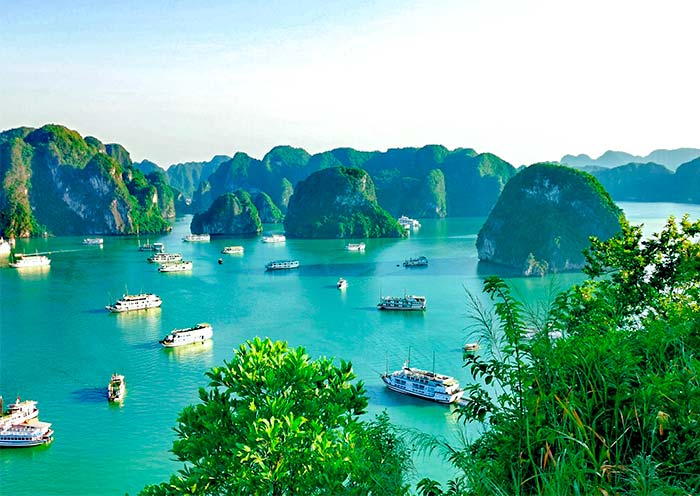
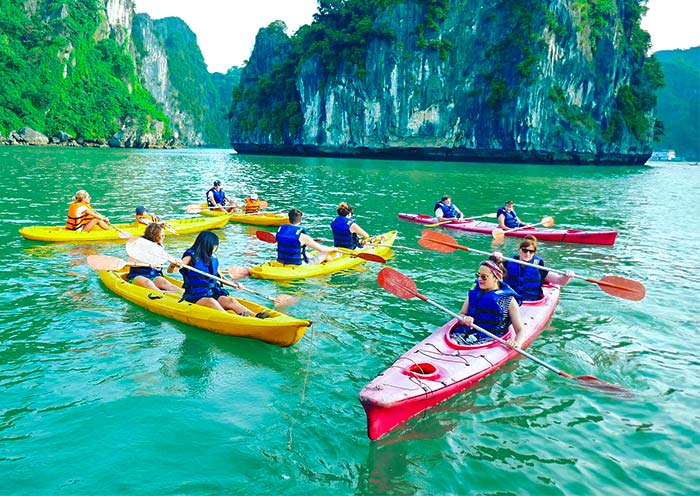
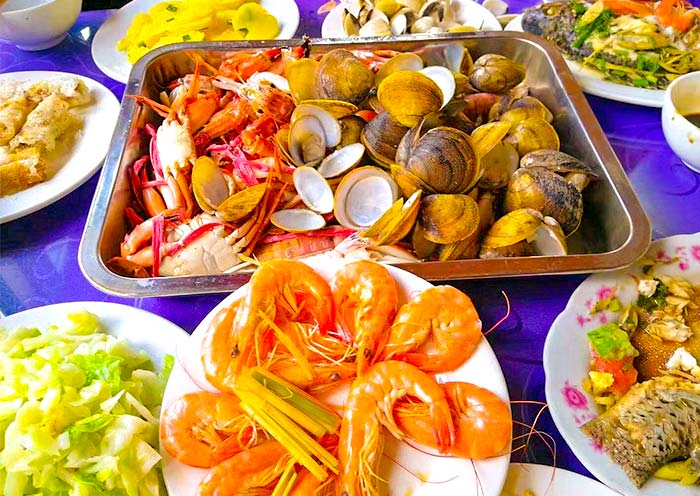
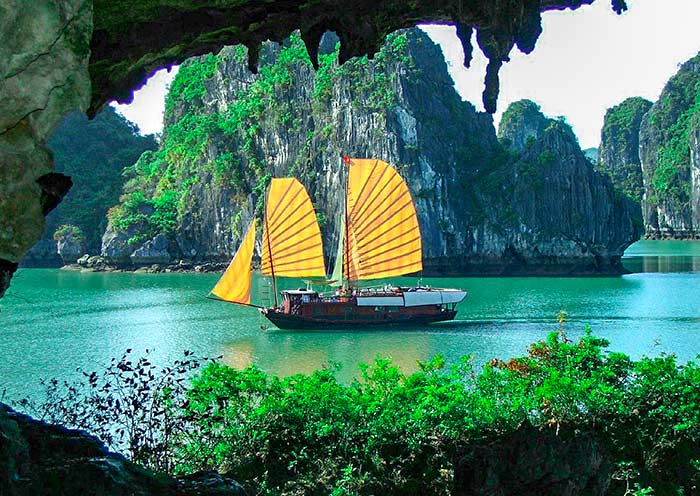
Early risers can embrace the sunrise with a Tai Chi class on the sundeck, invigorating your body and mind. Enjoy a delicious breakfast to onboard.
After breakfast, continue your exploration of Halong Bay! You can choose to participate in exciting water activities like kayaking or follow the cruise itinerary to admire the majestic limestone formations.
Later this morning, return to the cruise for a smooth check-out process at the reception. As you cruise back to the pier, savor a delightful lunch at 10:00 AM. Disembarkation will take place between 11:00 AM and 11:30 AM.
Following disembarkation, you'll be transferred back to Hanoi. Meet your driver and head to the airport for your flight to Shanghai (about 3h).
Welcome to Shanghai, China’s most internationalized and vibrant city! Upon your arrival in Shanghai, your driver will meet you at the exit of the airport and escort you to your hotel in downtown Shanghai. You will have free time after your hotel check-in.
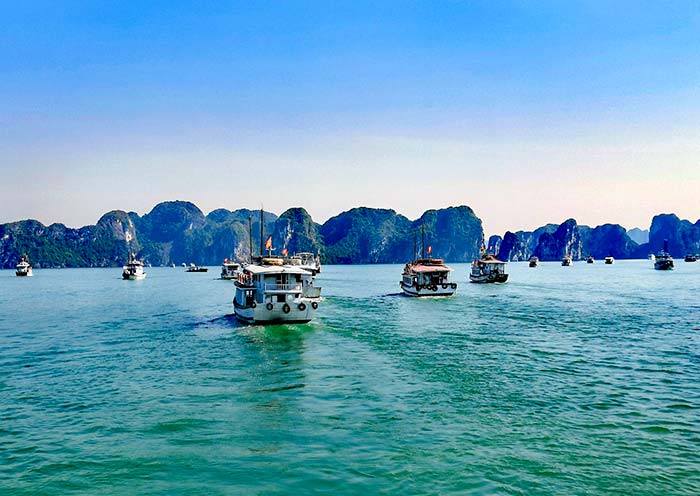

Today, your group will have full day to experience the perfect blend of East and West in the "Paris of the East." Explore brilliant museums, classical gardens, futuristic skyscrapers, and stunning architecture - all in one vibrant city.
First, head to Pudong and the Lujiazui financial district, home to a trio of iconic skyscrapers. The Shanghai Tower, China’s tallest and the world’s second-tallest building at 632 meters (2,073 ft), soars with a dramatic 120-degree twist from base to peak. Ride the world’s fastest elevators (64 km/h) to the "Top of Shanghai Observatory" on the 118th floor, 546 meters above ground. Enjoy breathtaking 360-degree views of the city, with the Jin Mao Tower and Shanghai World Financial Center below.
Later, visit the Shanghai Museum (East), one of the world’s finest museums of ancient Chinese art. Its sleek, modern design is inspired by the traditional Chinese jade bi disc. Inside, explore galleries of bronzes, ceramics, calligraphy, paintings, jade, furniture, coins, and sculptures. Don’t miss iconic treasures like the Da Ke Ding, a 3,000-year-old bronze vessel, displayed with the Zi Long Ding and Marquis of Jin Bells - a rare highlight of the Bronze Gallery. Also, see the legendary Sword of King Goujian of Yue, a masterpiece of ancient craftsmanship.
Next, visit Yu Garden, Shanghai’s most famous classical garden, hidden in the heart of the city. Stroll through elegant pavilions, rockeries, and lotus ponds, and admire exquisite carvings and traditional architecture. Outside, Yuyuan Bazaar offers local snacks, souvenirs, and handcrafted art.
In the afternoon, walk along Nanjing Road Pedestrian Street, lined with global brands, cafes, and historic buildings. End at the Bund, Shanghai’s top must-see landmark. Known as the "Exhibition of International Architecture," it features 52 grand buildings in Gothic, Baroque, and Art Deco styles. From here, enjoy a stunning view of the Pudong skyline across the Huangpu River.
Travel Notes:
- Yu Garden is closed on Mondays. In this case, we may visit the City God Temple, or French Concession
- Shanghai Museum (East) is closed on Tuesdays. You will visit Shanghai Museum (People’s Square) on that day. If access to the People’s Square location is unavailable, we will arrange an alternative city attraction.
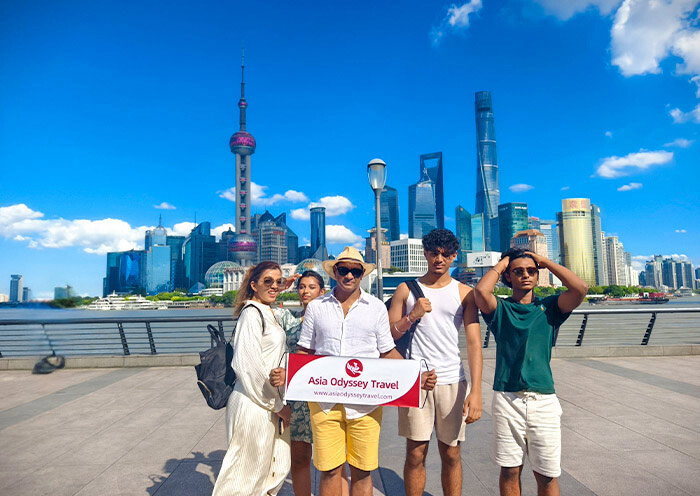
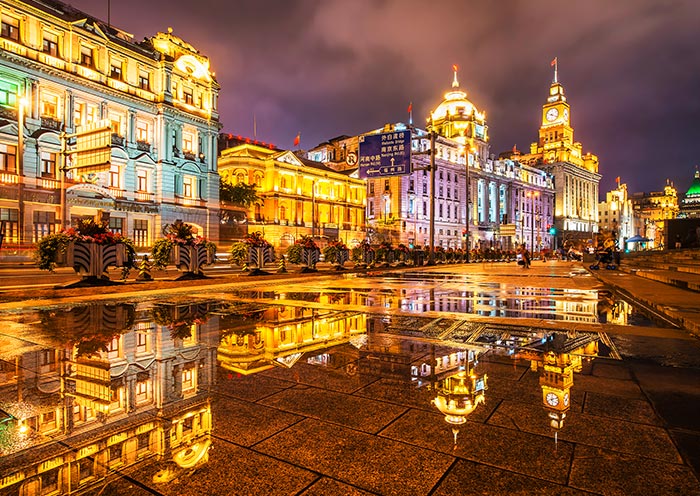
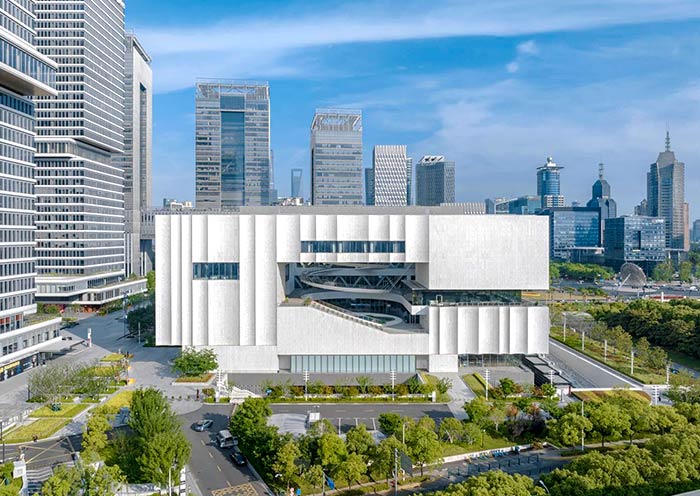
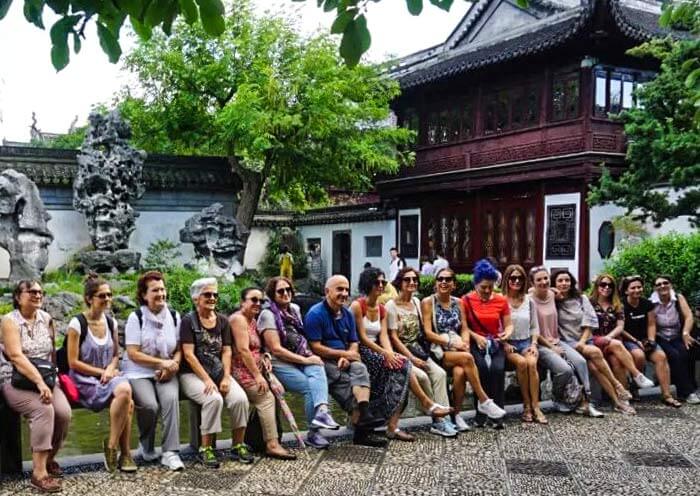
On this day, you will have some free time till be met in the hotel lobby and escorted to the airport for your flight to Zhangjiajie (about 2.5 hours).
Welcome to Zhangjiajie, an incredible place where you can see Avatar Hallelujah Mountain in reality! Upon your arrival in Zhangjiajie, the local driver will greet you at the exit of the airport, and then escort you to your hotel in Wulingyuan Area. Enjoy some free time on your own after the hotel check-in.
After breakfast, you’ll visit Zhangjiajie National Forest Park in Wulingyuan, where you’ll explore the Ten-Mile Gallery, Yuanjiajie, and behold the awe-inspiring Hallelujah Mountains (Qiankun Pillar). After lunch, you’ll be transferred to Tianzi Mountain Nature Reserve, where you’ll hike through stunning peak forests and enjoy panoramic views. Throughout the day, you’ll immerse yourself in the breathtaking beauty of the Wulingyuan Scenic Area - home to over 3,000 towering quartz-sandstone pillars, a UNESCO-listed landscape of rare geological wonder.
In the morning, step into the enchanting Ten-Mile Gallery, a valley alive with natural artistry. Glide through on a scenic tram, passing iconic rock formations like The God of Longevity Welcoming Guests, The Old Herb Picker, and the majestic Three Sisters Peaks. For the full experience, ride the tram in and stroll back on foot — a peaceful way to soak in every magical detail of this natural masterpiece.
Next, head to Yuanjiajie, the real-life inspiration for the floating mountains in Avatar. A sightseeing bus will take you to the Bailong Elevator, known as the "World’s No. 1 Outdoor Elevator". Holding a Guinness World Record for being the tallest, fastest, and heaviest outdoor elevator, it lifts you 326 meters in just 66 seconds from the valley floor to the mountain top.
From there, hike into Yuanjiajie - a mystical world of towering pillars and misty peaks. Don’t miss the South Sky Pillar (Avatar Mountain), the Floating Peak (1,074m) — a 150-meter-tall vertical spire rising from the valley - and the dramatic Yuanjiajie Scenic Trail (3.5 km), built along a cliff’s edge and adorned with red prayer ribbons.
Along the way, admire natural wonders like:
- Backyard Garden(后花园)
- Lost Soul Platform(迷魂台) - the best viewpoint in Yuanjiajie
- First Bridge Under Heaven(天下第一桥) - a natural stone arch, Yuanjiajie’s iconic landmark
This unique sandstone forest was shaped by millions of years of tectonic movement and erosion - a rare geological phenomenon that inspires wonder and awe.
After lunch, board the sightseeing bus to Tianzi Mountain Nature Reserve, named after Xiang Dakun, a Tujia ethnic leader who declared himself “Tianzi” (Son of Heaven) during the early Ming Dynasty (1368–1644). At 1,262 meters, Tianzi Mountain is in the prime stage of peak forest evolution — hailed as the "King of Peaks" and famously featured in the classic TV series Journey to the West.
From Dianjiangtai Platform (点将台), gaze across the West Sea Peaks Forest - a sea of jagged peaks rising from a misty canyon. Don’t miss the Imperial Writing Brush Peaks (御笔峰), a row of six towering stone pillars resembling ancient calligraphy brushes — said to be the pen once used by Xiang Tianzi.
Then, hike to He Long Park (贺龙公园) to see the bronze statue of Marshal He Long and his warhorse, and visit Tianzige Pavilion (天子阁). At 30 meters tall, the pavilion offers a panoramic view of the entire mountain range - peaks stretching endlessly, a sight of true grandeur.
After the tour, return to your hotel for a well-deserved rest.
Note: During peak seasons, your guide may adjust the itinerary (e.g., reverse the route) to avoid large crowds and ensure more comfortable experience.
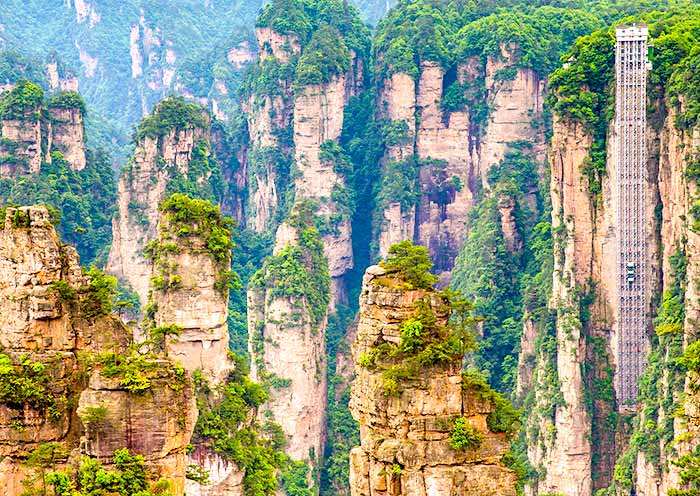

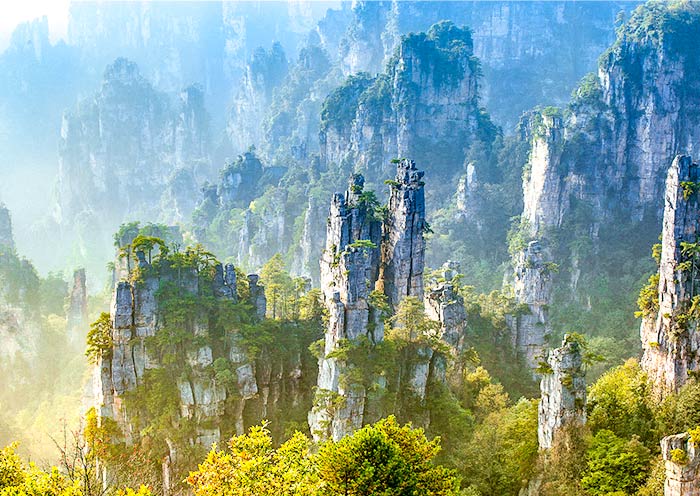
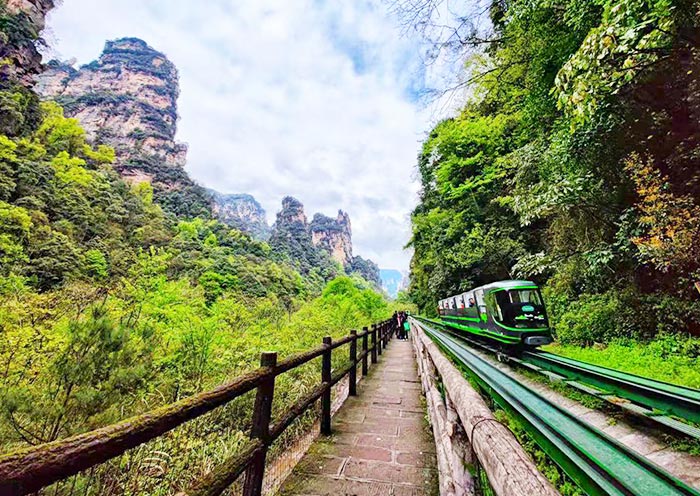
After breakfast, you’ll be transferred from Wulingyuan to Zhangjiajie Grand Canyon, approximately 56 km away (about 1.5 hours by car). There, you’ll experience the breathtaking Grand Canyon Glass Bridge. Afterward, enjoy delicious lunch before heading to Baofeng Lake for a relaxing boat ride. In the late afternoon, you’ll return to Zhangjiajie City (about 35 km, 1-hour drive) for an overnight stay.
Famous for its numerous waterfalls and fresh mountain air, Zhangjiajie Grand Canyon is a must-visit destination - especially for photographers and adventure lovers. The Glass Bridge is the highlight: the world’s longest and highest glass-bottomed bridge, stretching 375 meters between two dramatic cliffs and soaring 300 meters above the valley.
Designed by Israeli architect Haim Dotan, the bridge is made entirely of glass - no steel structure - and can support up to 800 people at once. At its center is the world’s highest bungee jumping platform, where thrill-seekers can fulfill their dream of flying like Spider-Man (bungee jump fees are self-paid). Walking across the bridge takes about 1 hour, offering a heart-pounding yet unforgettable experience.
As you step onto the crystal-clear surface, you’ll look straight down into a lush, mist-filled canyon - a sensation like floating in mid-air. The panoramic views of the entire canyon are simply stunning. Come take on the skywalk challenge and show the world your courage!
After the adrenaline rush of the glass bridge, unwind at the serene, mirror-like Baofeng Lake. From the entrance, a shuttle bus will take you to the pier, where you’ll board a traditional wooden boat for a peaceful cruise across the lake.
Spanning 2.5 kilometers long, 200-1,000 meters wide, and averaging 72 meters deep, Baofeng Lake lies in a mountain basin, surrounded by lush greenery and striking rock formations. As you glide across the calm waters, you’ll be captivated by the reflections of towering peaks and serenaded by traditional folk songs performed by local ethnic performers - a perfect contrast to the morning’s thrills.
After the tour, return to your hotel for a good rest.
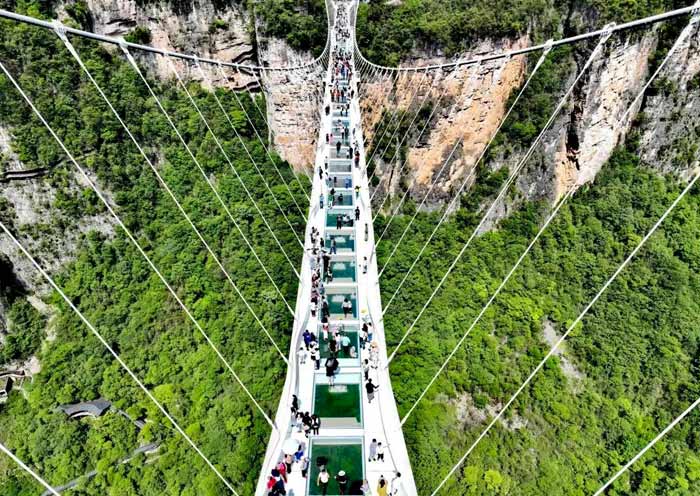
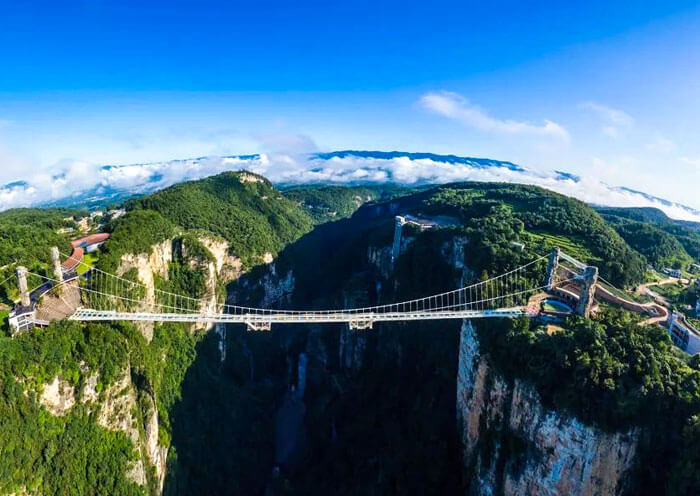
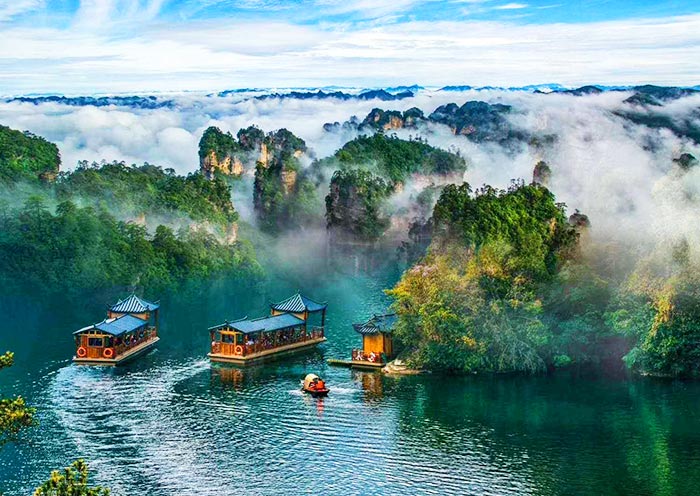
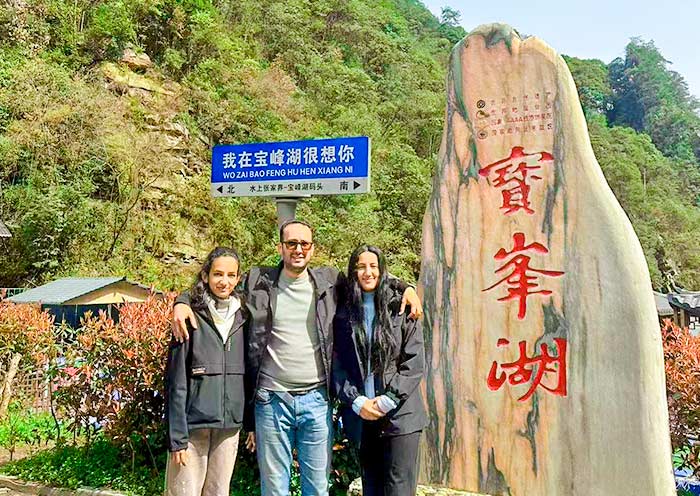
Today, you will spend half-day tour of Tianmen Mountain in Tianmenshan National Forest Park, known as as the "Soul of Zhangjiajie" and the "No.1 Sacred Mountain of Western Hunan Province". Located only 8 kilometers away from Zhangjiajie city center, the Tianmen Mountain Scenic Area is unique in that it is suitable for people of all ages, and climbing is not necessary.
First, take the 30-minute cable car (7,455 meters) ride from Zhangjiajie City to the top of Tianmen Mountain. As you ascend, you'll be treated to a panoramic view of the winding mountain road with 99 bends (the Road to Heaven) and the breathtaking beauty of the bonsai gardens. Now, brace yourself for a thrilling challenge. Take a deep breath and step on the cliff path hanging on the mountainside. Walk along the Glass Walkway, a transparent glass path that stretches for 60 meters and hovers 1,430 meters above the bottomless valley, giving you a thrilling sensation of walking in the sky. Additionally, experience the 1.6-kilometer-long Cliff-Hanging Walkway, which is built along the edges of the mountain's summits. It's truly an amazing adventure! Next, you have the option to visit Tianmen Temple, a Buddhist structure that embodies the architectural style of the Qing Dynasty (1616-1912). It is surrounded by lush green forests, providing a serene atmosphere. And, you can also visit Yunmenxianding (云梦仙顶; 1,518m), the highest point in Tianmenshan National Forest Park, to enjoy a bird's eye view of the surroundings.
Afterward, go down by escalator from the mountaintop to Tianmen Cave, the world's highest natural mountain through the cave which spans 131.5 meters. Tianmen Cave, also known as Heaven's Gate Hole (天门洞), is frequently enveloped in swirling clouds and mist, and at other times, it is illuminated by ethereal rays of sunlight, resulting in a mesmerizing and ever-changing display of light and shadows. Take your time there to capture some beautiful photographs. Following that, you have the option to either walk down the 999 steps or take the elevator. Then, welcome back to another cable car station. Take the cable car down the mountain.
After touring Tianmen Mountain, you’ll be transferred to Fenghuang Ancient Town (凤凰古城), located southwest of Zhangjiajie City (211km, 3-hour drive).
Fenghuang Ancient Town is a fairytale-like riverside treasure nestled along the tranquil Tuo River. Widely celebrated as one of China's most picturesque towns, it presents postcard-perfect scenery: the Tuo River meanders gracefully past stilted wooden houses (Tuojia Diaojiaolou), their reflections dancing on the water's surface like strokes from an ancient Chinese ink painting. This charming town also serves as an important cultural center for the Miao and Tujia ethnic minorities.
You will arrive during daylight hours, you'll find yourself walking along cobblestone streets flanked by well-preserved Qing Dynasty architecture, creating endless opportunities for beautiful photographs. The iconic Hong Bridge and the mirror-like reflections on the Tuo River make particularly stunning subjects for your camera.
As evening falls, Fenghuang undergoes a magical transformation. The lantern-lit alleys come alive with the energetic buzz of night markets and riverside bars, while thousands of glowing red lanterns cast their radiant light across the water, magnificently amplifying the beauty of the stilt houses.
Tuo River Boating Experience: Relaxing Views of Fenghuang Ancient Town (Choose Between Daytime or Nighttime Cruises)
Enjoy a scenic boat ride along the Tuo River. Opt for the daytime cruise to glide peacefully past the stilt houses and beneath Hong Bridge, where you can observe local fishermen at work, women washing clothes along the shore, and children playing by the riverbanks.
Or, take evening cruise for a completely different perspective as the town comes alive with illumination - glowing bridges and lanterns create a dreamlike atmosphere, their golden reflections shimmering across the water's surface.
Stay overnight in Fenghuang Ancient Town.
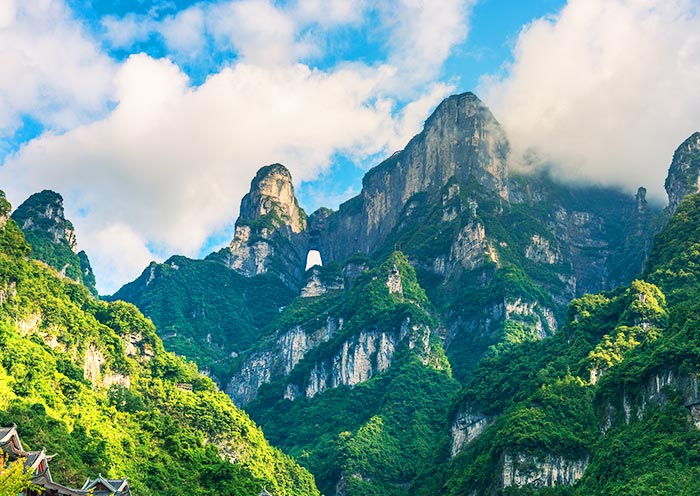
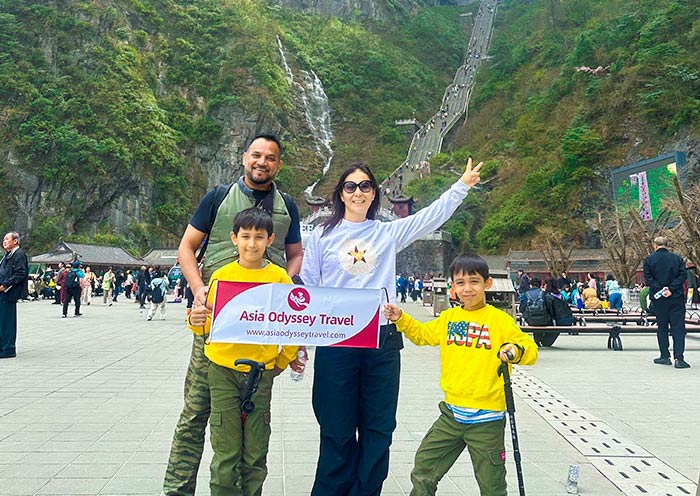
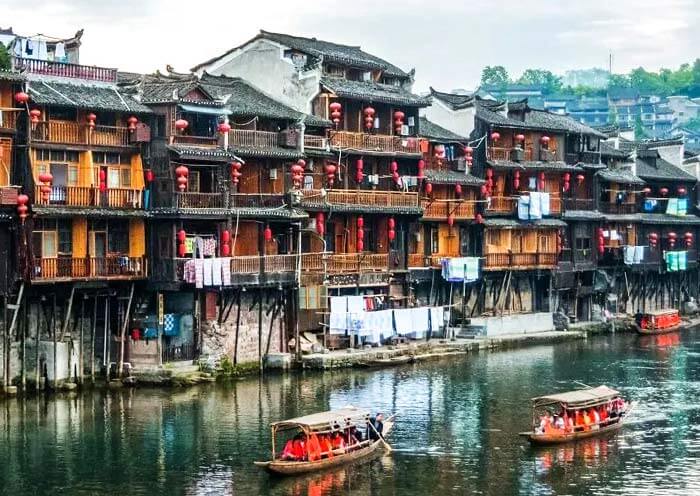
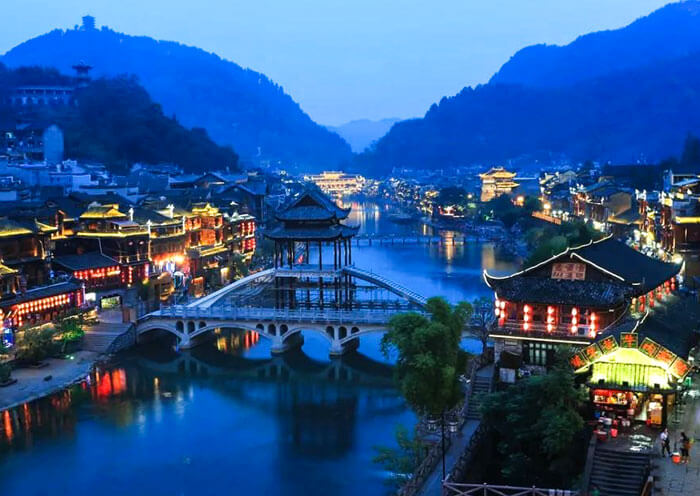
This morning, enjoy your beautiful time to discover Fenghuang's cultural treasures at your own pace. When people speak of Fenghuang Ancient Town, they inevitably recall Shen Congwen (1902-1988), the renowned Chinese writer and historian whose novel The Border Town (边城) catapulted this riverside gem to global fame.
Begin your exploration at the Former Residence of Shen Congwen, where you can walk through the preserved home of this literary master. The house contains original manuscripts and personal artifacts that reveal his deep connection to Fenghuang. Nearby, the Ancient East Gate (Donghua Gate) offers panoramic views of the old town and Tuo River from its 18th-century gate tower.
No visit would be complete without seeing the Hongqiao Bridge (Rainbow Bridge), the town's iconic landmark. Lined with teahouses and artisan shops, it's the perfect spot to photograph the stilt houses reflected in the water. You might also enjoy watching local Miao silversmiths and batik makers practice their centuries-old crafts at nearby artisan workshops.
After bidding farewell to Fenghuang, we’ll stop at Furong Ancient Town (芙蓉古镇) en route to Zhangjiajie. Prepare to discover the surreal "Ancient Town Hanging on the Waterfall" from every angle. Unlike anywhere else, this 2,000-year-old gem features a dramatic waterfall cascading through its heart.
Renamed after the 1986 film Hibiscus Town, Furong welcomes you with: Cliffside stilt houses clinging to emerald cliffs; Winding stone alleys steeped in history; A living Tujia culture thriving amid the mist.
With Asia Odyssey Travel, explore highlights of Furong Ancient Town. Visit Xizhou Bronze Pillar Garden (溪州铜柱), where a striking group sculpture depicts the Chu King and the local Tusi (chieftain) signing their peace treaty on the "Xizhou Bronze Pillar." Cast from 5,000 jin of copper, this sacred pillar is deeply revered by the Tujia people. Next, cross Tuwang Bridge (土王桥), a classic covered wind-and-rain bridge. In the morning mist, its reflection alongside the stilt houses creates a living ink-wash painting - a beautiful relic from the Tusi era. Then continue to Youyang Palace (酉阳宫), the summer retreat of past Tusi kings.
Finally, explore the waterfall!!!At Qingxiu Pavilion (观瀑台), behold the 60-meter-wide cascade framed by glowing cliffs. The misty scene feels ethereal - as if the town floats on air. (This is the Instagram moment!) Capture endless photos of this natural masterpiece.
After the tour, you will be transferred back to Zhangjiajie.
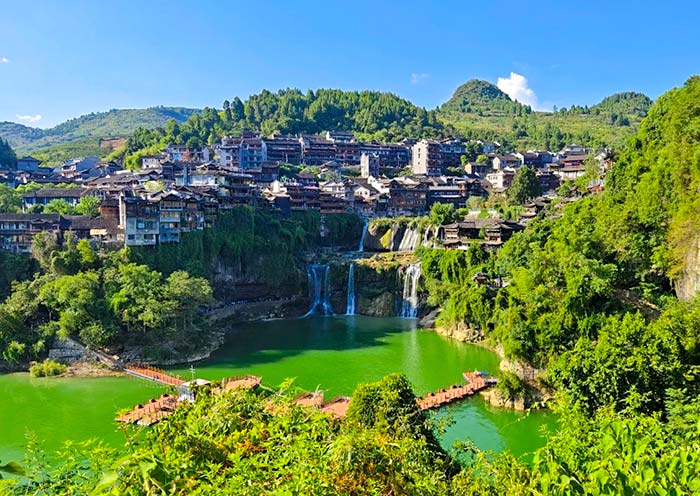

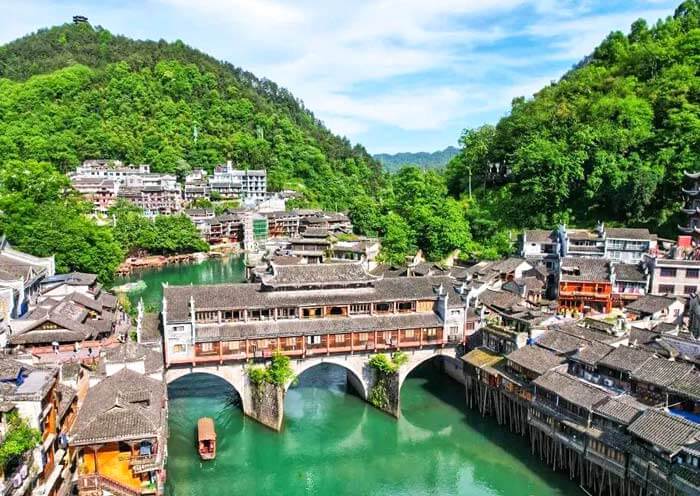

In the morning, you'll be transferred to the Chengdu East Railway Station for the high-speed train to Chengdu (about 5 hours). Welcome to Chengdu, the Hometown of Giant Pandas!
Your private driver and guide will be ready for you upon your arrival in Chengdu. Enjoy a trouble-free transfer to your hotel. The rest of today is yours to relax in this panda city at your leisure.
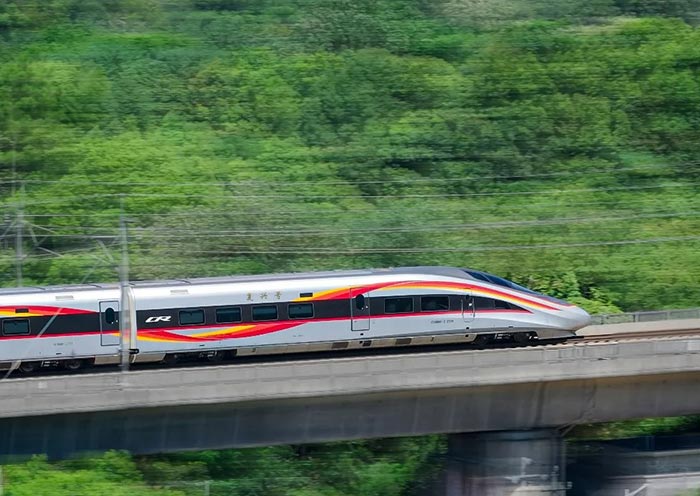
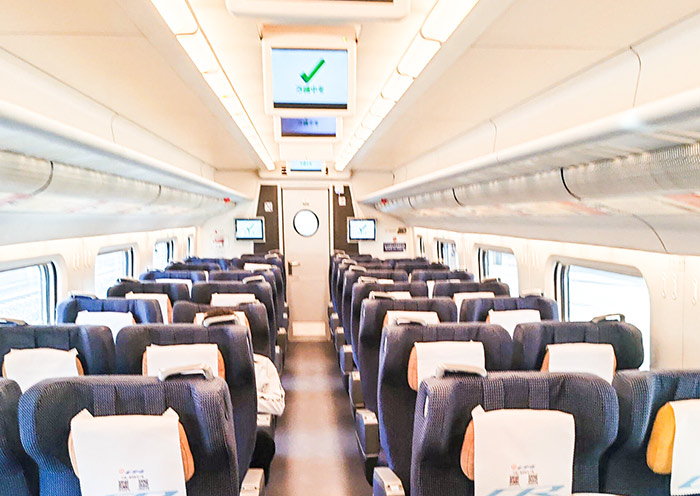
After breakfast, you will meet your guide early at the appointed time in the Chengdu hotel lobby. Today you are going to fulfill your panda dream with a 17-kilometer drive to Chengdu Research Base of Giant Panda Breeding (Xiongmao Jidi), or simply Chengdu Panda Base.
Chengdu Panda Base, the closest to the city proper, accommodated over 100 pandas which is the base with the largest population of captive giant pandas in the world. You will see giant pandas of different ages there. It’s great fun to watch them playing, eating, climbing, sleeping... If you come in autumn, you will have the chance to see the pink newborn giant panda cubs in the Sunshine Nursery House and the Moonlight Nursery House. Besides giant pandas, you can also meet the cute red pandas walking by your side in the Red Panda Playgrounds. Then follow your guide to discover more about panda’s secrets through the Panda Museum. (Note: Pandas like cool weather, so we advise you to arrive there early as pandas are more active in the morning. During the day of high temperatures, pandas would prefer to stay inside and sleep.)
In the afternoon, it's time to take a leisurely stroll inside Chengdu Renmin Park (Chengdu People's Park) like a local and enjoy the city's slow lifestyle. You can watch locals square dancing, practicing Taiji, singing Chinese folk songs, playing traditional Chinese musical instruments, as well as playing Chinese chess and boating on the lake. Don’t miss the blind date corner (a marriage market) where parents of unmarried adults flock to the park to find a partner for their daughter or son. Then, order a cup of fragrant jasmine green tea (a favorite of Chengdu locals) while sitting in a time-honored tea house, such as Heming Tea House. Chat with your friends, try Chengdu Ear Cleaning by a professional ear cleaner, and see locals having fun playing mahjong.
After that, return to Chengdu downtown for an relaxing stroll at Jinli Old Street. With a history over 1,800 years, it showcases the profound cultures of Ancient Shu Kingdom. Take a nice walk on the traditional stone-paved street full of delicious local snacks, delicate artifacts, interesting folk shows, etc.
Discover the New Lifestyle of Chengdu at Kuanzhai Alley (Optional)
If you have the energy, I suggest you explore Kuanzhai Alley on your own, a charming old street located just 800 meters away from Renmin Park. Kuanzhai Alley, also known as Wide and Narrow Alley, is a vibrant microcosm of Chengdu's modern "slow lifestyle." It has become a hub for the city's youth, filled with eclectic eateries, bustling nightclubs, traditional craft stores, and trendy coffee shops.
Drive back to hotel in Chengdu.
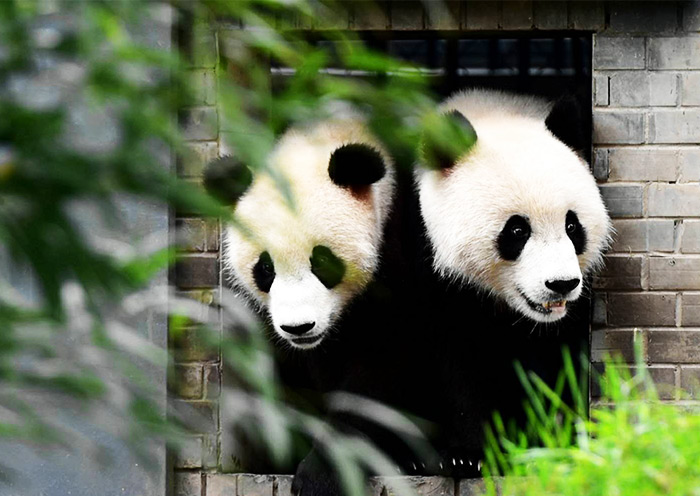
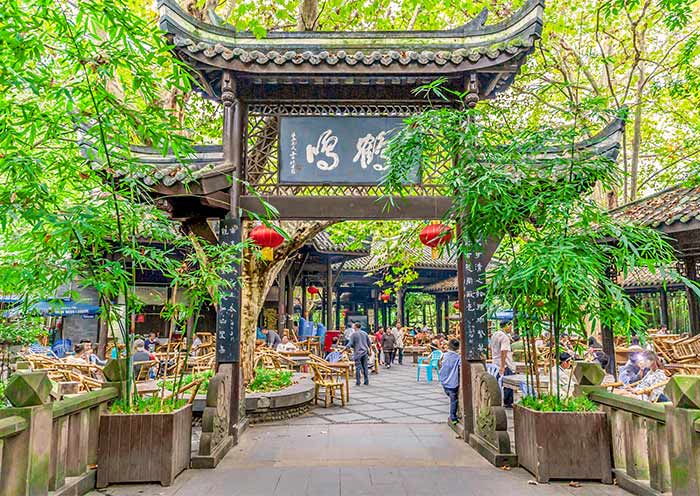
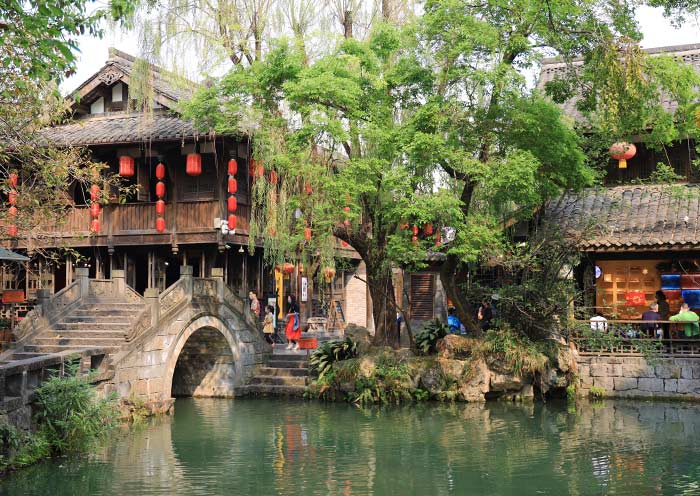
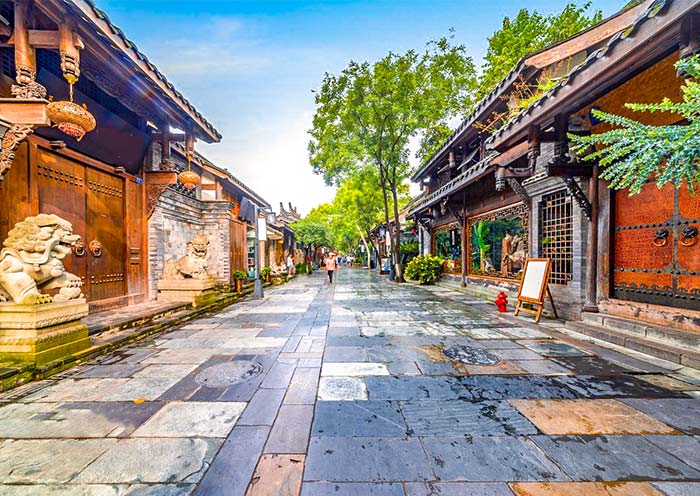
On this day, drive about 2.5 hours from Chengdu to visit the UNESCO World Heritage Site - Leshan Giant Buddha which is the largest and tallest stone-carved statue of Buddha in the world. Carved into a cliff face overlooking the confluence of three rivers: the Dadu, Min and Qingyi, the 1200-year-old Grand Buddha at a towering height of 71 meters (233 feet) and 28m (92ft) wide. His shoulders span 28m, and each of his big toes is 8.5m long. His ears are 7m. The Buddhist monk Haitong conceived the project in AD 713, hoping that Buddha would protect the boats and calm the lethal currents.
The Leshan Giant Buddha offers two ways to experience it from different perspectives. You can climb the stairs built into the cliff face, providing an up-close look at the statue and its intricate details and enjoying the changing view from various angles of the giant Buddha statue, from its head to its feet. Additionally, you have the option to take a boat (about 20~30 minutes) on the rivers to view the statue from the water, which offers a different and impressive vantage point. You'll be able to witness the entirety of the Giant Buddha and appreciate the statue's grandeur within its natural surroundings.
After the tour, we will drive you back to Chengdu.

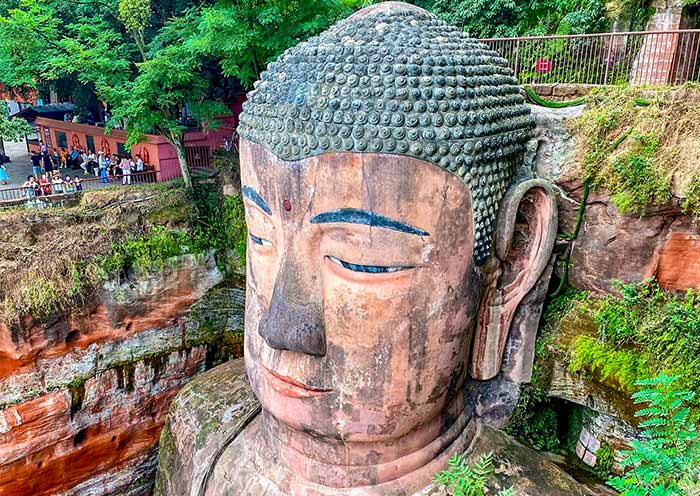
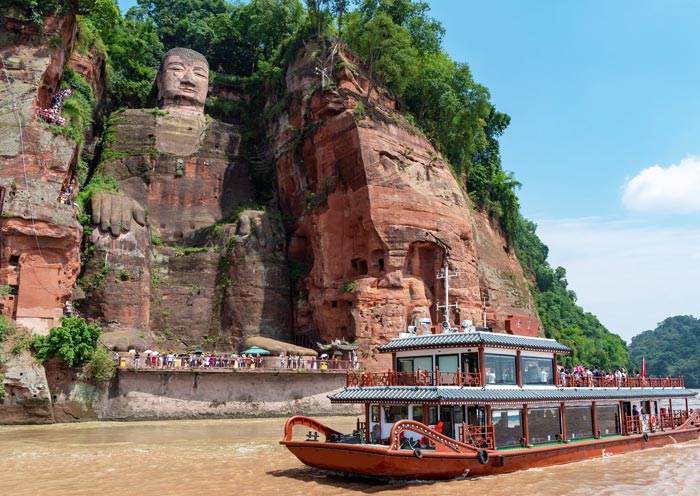
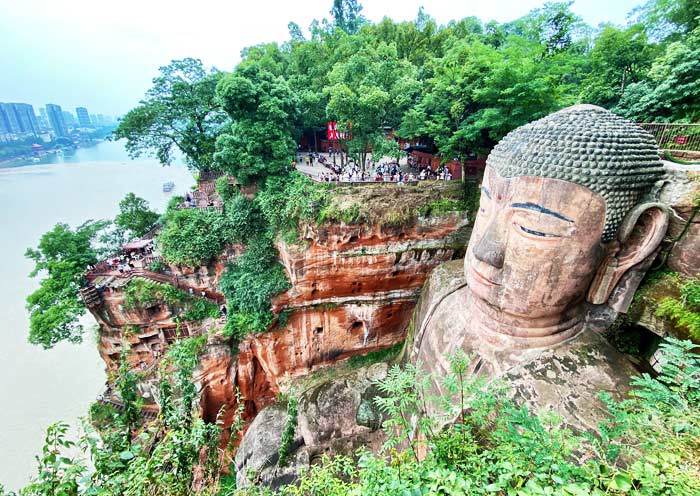
Enjoy your free time in Chengdu until you tour guide meet you at your hotel lobby, then escort you to train station for your train to Xian (about 3.5-4.5 hours)
Welcome to Xian, the capital of 13 ancient China dynasties! Upon your arrival at the train station in Xian, the tour guide and driver will meet and greet you at the exit, and then escort you to the well-selected hotel in Xian. You will spend the rest of the day exploring one of Xi'an's landmarks and a famous food street.
In the afternoon, you will go to visit the Giant Wild Goose Pagoda, one of Xi'an's most recognizable landmarks and symbol of the magnificence of the Tang Dynasty. This seven-story pagoda standing in the tranquil Da Ci'en Temple is one of China's best examples of a Tang-style pagoda (squarish rather than round). It was completed in AD 652 to house Buddhist sutras brought back from India by the monk Xuan Zang. His travels inspired one of the best-known works of Chinese literature, Journey to the West. Later, you will have the opportunity to explore the vibrant and bustling Muslim Quarter (Muslim Street). This historic quarter, situated just behind the Drum Tower about 430 meters west of the Bell Tower in downtown Xian, has been around for over 1,000 years.
Stay overnight in Xian.
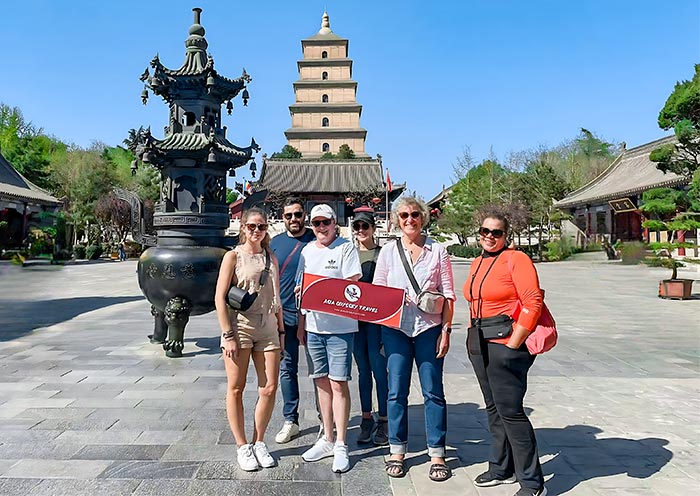
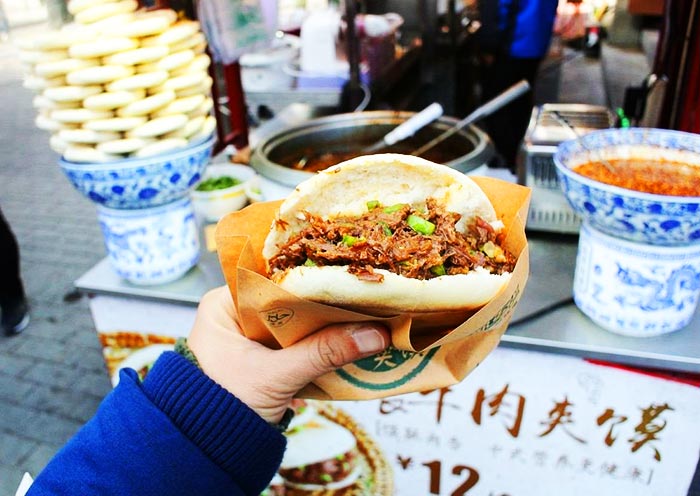
After breakfast, your guide and driver will pick you up at your hotel. Drive about 40km (about 1 hour) to uncover one of the greatest archaeological discoveries in the world - the Terracotta Army Museum, built by the first emperor of China, Qin Shihuang, to protect him in the afterlife. Around 8,000 vivid life-size Terracotta Warriors have been found so far. First, visit the largest and most imposing pit, believed to contain over 6,000 terracotta figures of soldiers and horses. You will be amazed by this subterranean life-size army of thousands standing silently to guard the emperor. Marvel also at the fabulous artistic skills of ancient Chinese artisans. Next, move to another pit where you can see around 1,300 warriors and horses. Examine the ancient army formation, including the kneeling and standing archers, the chariot war array, and numerous troopers holding weapons.
After lunch, head to visit the Ancient City Wall, also known as the Fortification of Xian, representing one of the oldest, largest, and best-preserved Chinese city walls. Spend time leisurely walking the wall and enjoying its inner and outer walls, watchtowers, and moat, taking in panoramic views of modern Xian, there, you will also visit the awe-inspiring Bell Tower (or Drum Tower), a landmark from the Ming Dynasty dating back 600 years, will be beautifully illuminated, creating a captivating backdrop for stunning photos showcasing the harmonious blend of ancient history and modernity in Xian. In the evening, you may also have the chance to visit the lively Bell & Drum Tower Square (Zhongulou Square), allowing you to immerse yourself in Xian's vibrant nightlife like a local.
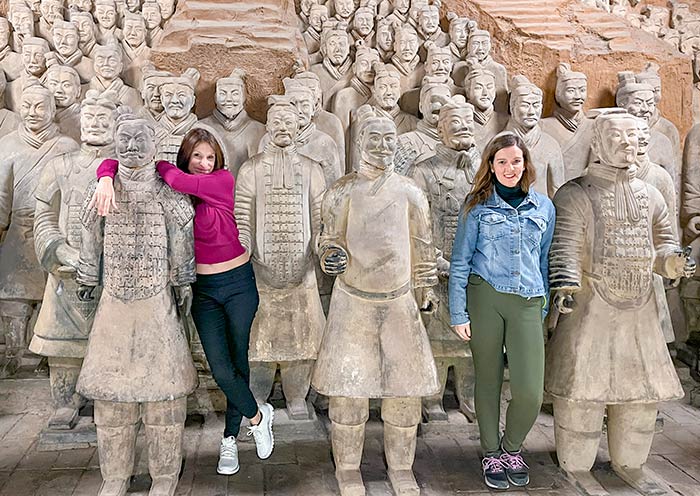
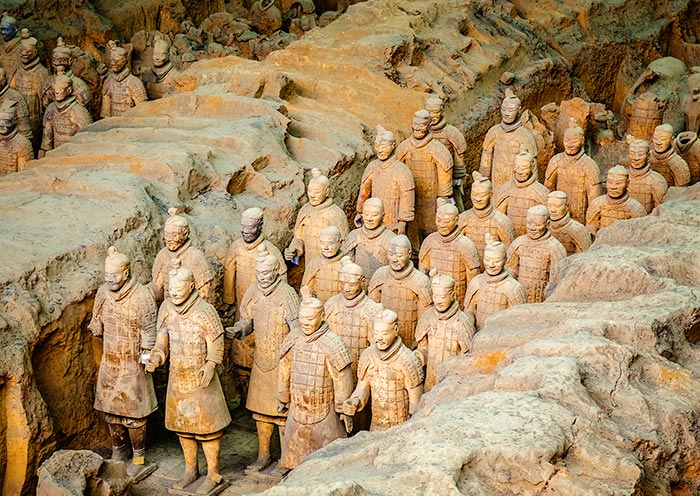
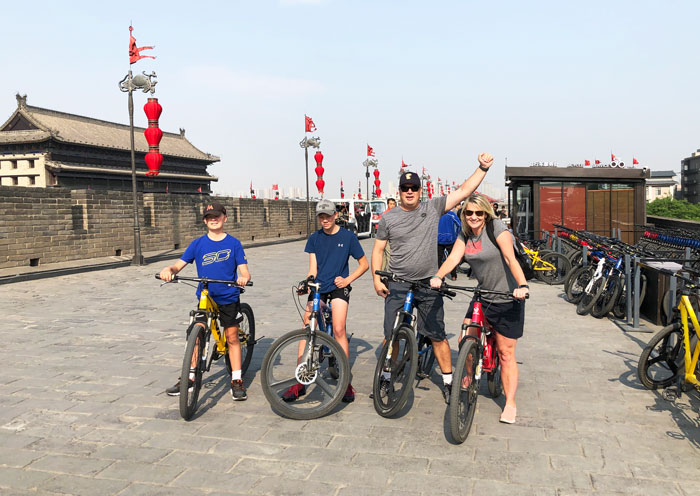
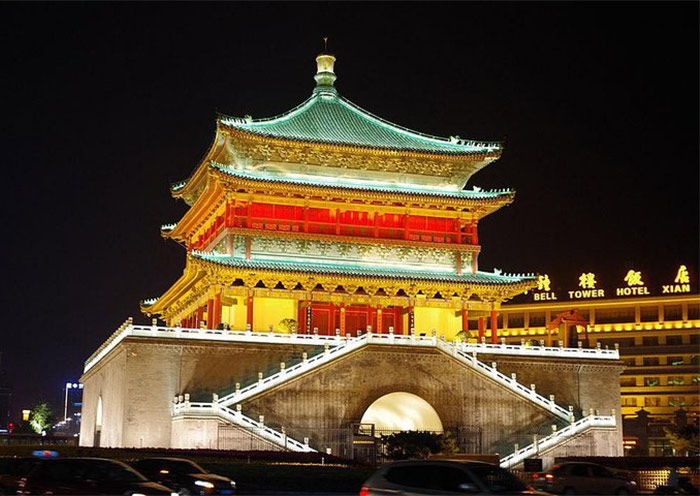
After breakfast, your driver will escort you to airport for a flight to Beijing (about 2 hours). Welcome to Beijing, the capital city of China! Upon your arrival at the airport/train station in Beijing, the tour guide and driver will meet and greet you at the exit, and then escort you to the well-selected hotel in downtown Beijing. The rest of the day is free on your own so you can have a good rest for the jet lag or explore Hutongs.
In the afternoon, you can have a bird's eyes view of the hutong area from the Drum Tower, and you will have the chance to view the drum performance there. After that, you can hike in the Yandaixiejie Steet, the oldest commercial street (about 800 years) and one of the oldest and top 10 popular hutongs in Beijing. Yandaixie Street, which means Skewed Tobacco Pouch Street in Chinese, is a 232-meter-long Hutong. During the Qing Dynasty, people were fond of smoking and carried tobacco pouches (Yandai) with them wherever they went. As a result, many tobacco shops (selling smoking sets) opened on this skewed (xie) street, giving rise to its name. Now you can still purchase tobacco pouches of various sizes and shapes there, including porcelain ones, jade ones, wooden ones, and bronze ones. Located close to the Shichahai Park and Nanluoguxiang Hutong, Yandaixiejie is also a cultural street, where many quadrangle dwellings (Si He Yuan) are dotted, attracting millions of visitors each year. Don't forget to try the Hutong food and take a Rickshaw Tour around the Hutongs and the Shichahai Area.
Have a good rest tonight.
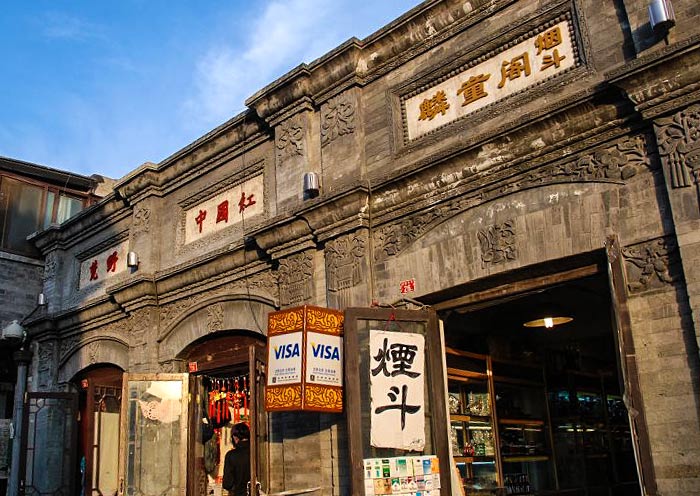
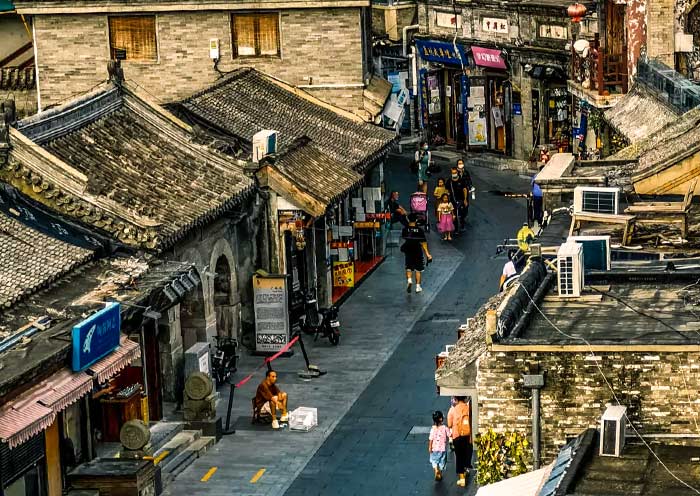
Today you will spend the whole day exploring the ancient citadel of Beijing through China's famous landmarks, imperial grandeur, and royal gardens.
After breakfast, your guide will pick you up at your hotel and head to Tiananmen Square, the world's largest public square and symbol of China. It has witnessed many major events in China's history over the past decades, and from here you can take great photos of Tiananmen Gate, seen daily on CCTV News.
Walking across the square, you will visit the mighty and splendid Forbidden City, the world's largest palace complex and former home of 24 Chinese emperors. Listed as a UNESCO World Heritage site, the Forbidden City has about 500 years of history, serving as the political and ritual center of China during the Ming (1368-1644) and Qing (1644-1911) dynasties. With over 8,700 rooms, it is not only China's largest and best-preserved collection of ancient buildings, but also a city within a city, like the Vatican in Rome. Enter through the Meridian Gate and visit along the central axis to ensure you see all the highlights. Admire the brilliant architecture and numerous ancient treasures while listening to your guide share stories of the emperors who once lived here.
Later, take a 15-minute walk up to Jingshan Park, where you can enjoy magnificent panoramic views over modern Beijing and the Forbidden City's russet roofs.
In the afternoon, drive to the Summer Palace, the "Museum of Royal Gardens," once a summer retreat for royal families. The grounds, temples, gardens, pavilions, lakes, bridges, gate-towers, and corridors are marvels of landscape design. Take a leisurely stroll to appreciate the imperial architecture, hilltop views, and beautiful lakes, which offer a pastoral escape into the landscapes of traditional Chinese painting.
(Travel Note: Travel Note: The Forbidden City in Beijing is closed on Mondays. If your tour falls on that day, the itinerary will be adjusted to ensure you visit the Forbidden City.
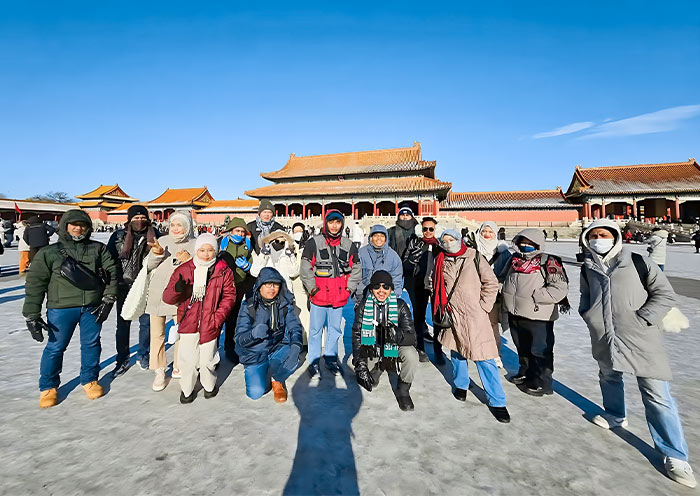
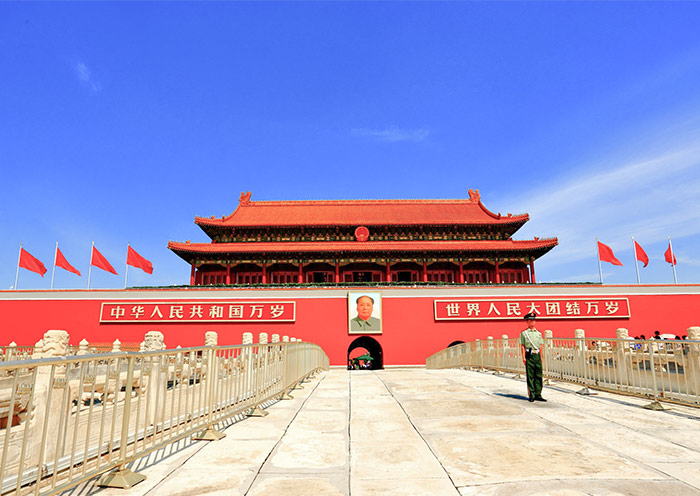
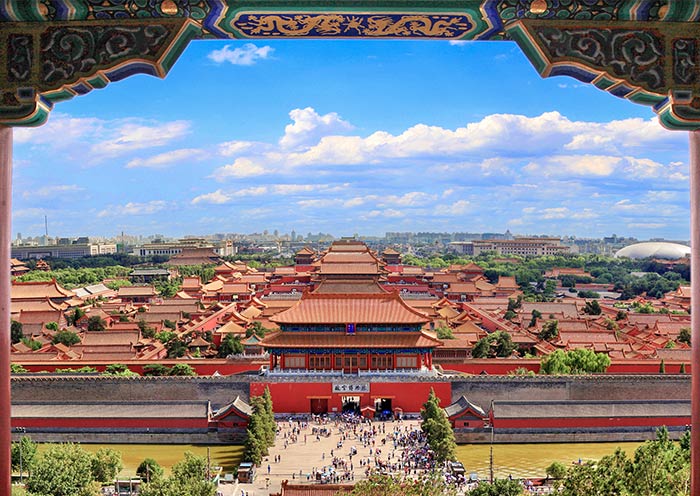
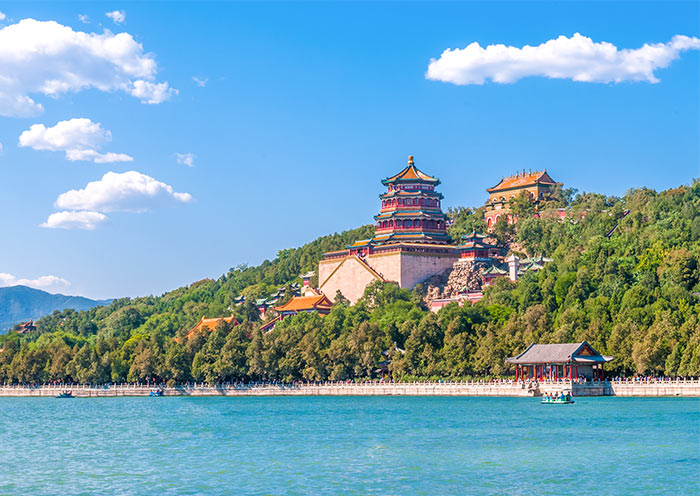
In this morning, you will head northwest of Beijing (about 1.5-2 hours’ drive, 73km) to the Great Wall at Mutianyu. The Great Wall boasts a history over 2,000 years and stretches more than 3,000 miles across several provinces of northern China, making it one of the most impressive ancient masterpieces on the planet. Mutianyu Great Wall is connected with the Jiankou Great Wall in the west and the Gubeikou Great Wall in the east. Mutianyu is the longest and best fully-restored Great Wall with fewer tourists and is also famed for its 23 Ming-era watchtowers and stunning views. Take the cable car up to the 14th watchtower and then enjoy the memorable hiking time on the wall while visiting its western route. With the green pines and cypresses covering the surrounding area, and the winding wall standing majestically on the vast land, you will capture the most stunning natural scenery in this section. Challenge yourselves while climbing up to the 20th watchtower where you could fulfill your Great Wall dream. Cherish the chance and take photos as many as you like!
After the once-in-lifetime experience, head back to downtown Beijing and have the chance to take photos with the exterior of the Bird's Nest (Beijing National Stadium) and Water Cube (Beijing National Aquatics Center). They were both designed for the 2008 Beijing Olympics and used for the 2022 Winter Olympic Games.
After that, transfer back to your hotel and have a good rest tonight.
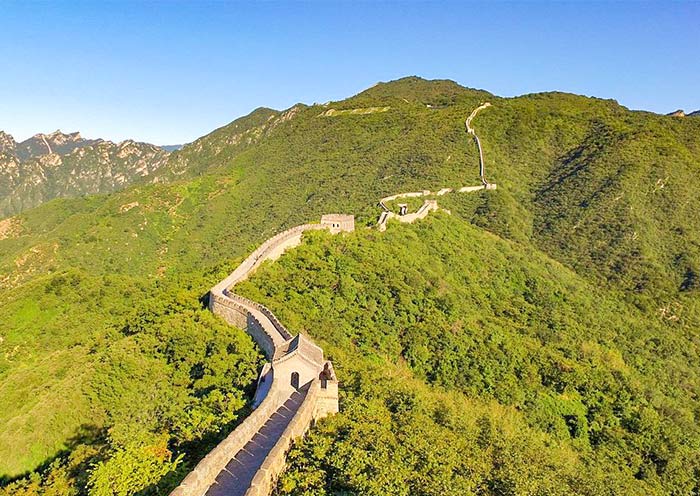
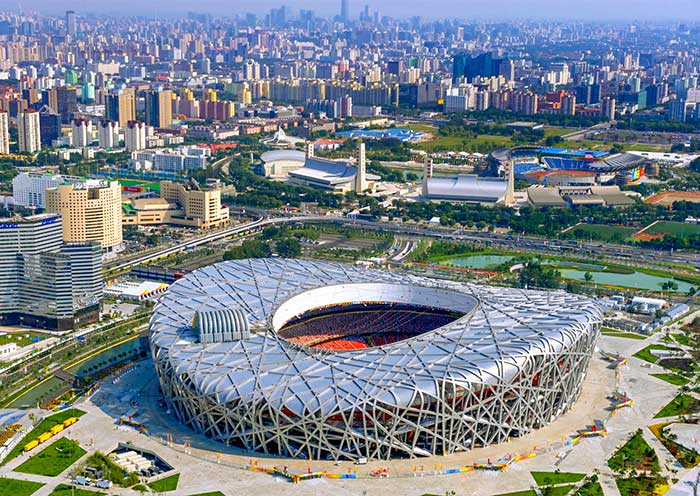
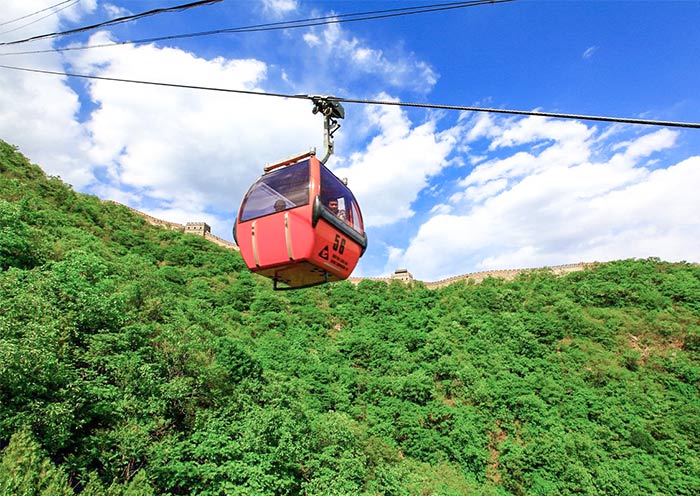
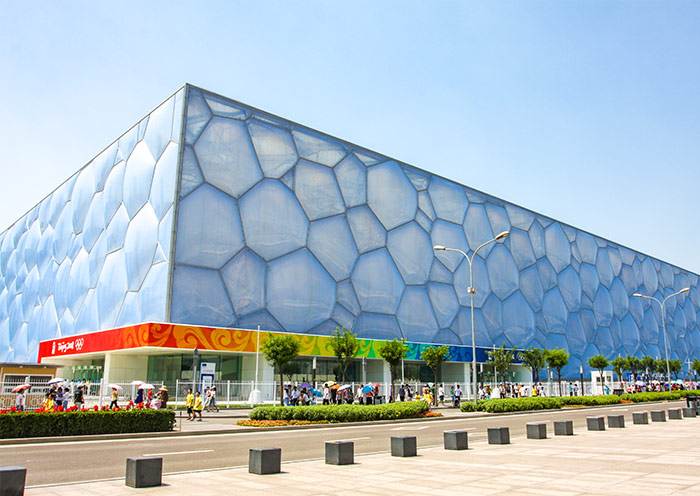
It is time to end your 1 Month Indochina China Odyssey tour. You will have some free time in Beijing and explore more on your own till be escorted to the airport/train station for your flight or high speed train to your next destination.
Trip Extension Ideas: If you want to explore other Asia destinations rather than return home right away, we would be glad to assist you with an extension trip. Feel free to tell us your ideas!
Thank you for choosing Asia Odyssey Travel for your China tour, and we are always here working for you and hope to see you again for your next trip to China/Asia. Safe journey!
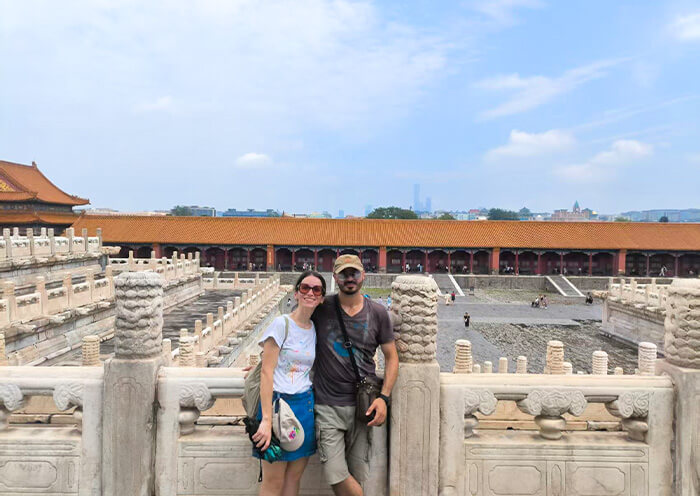
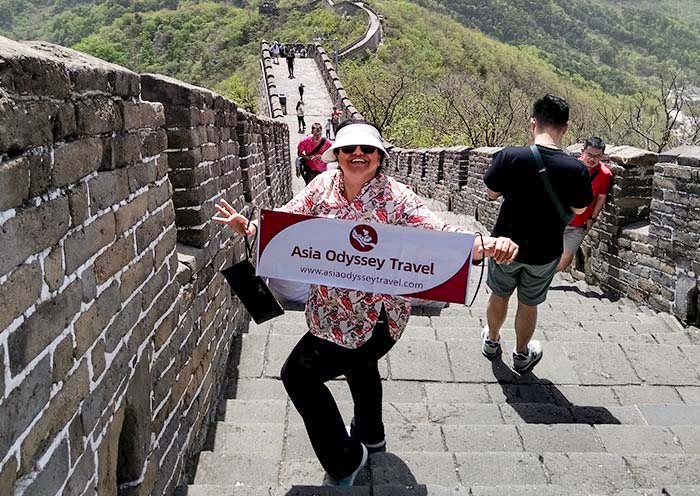
Price: What’s Included & What’s Excluded
What's Included:
What's Excluded:
Hotel Conditions for Your Asia Tour
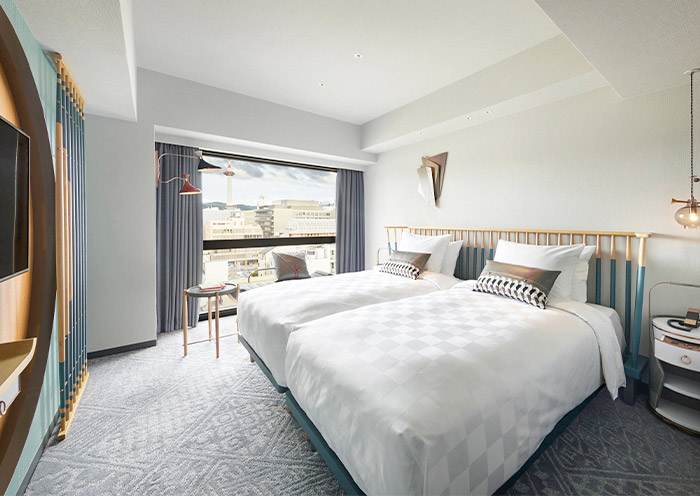

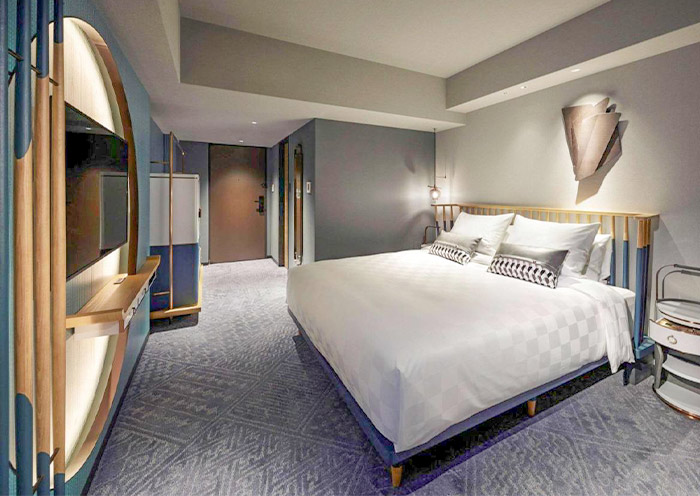
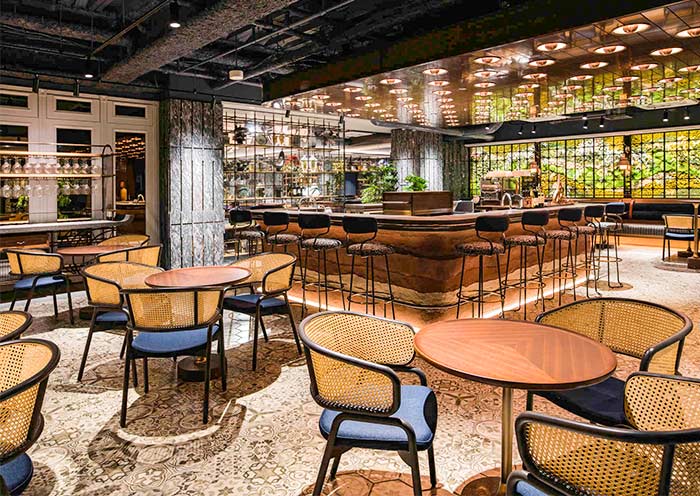
We offer a range of accommodation options to suit various preferences and budgets: luxurious 5-star hotels, comfortable 4-star hotels, and economical 3-star hotels. Our selected hotels are conveniently located close to the city center or popular tourist spots.
If you have specific needs or preferences, please consult with your travel advisor.
Photo Gallery for This Itinerary
Price: request
(Based on a private tour for two people. Price varies depending on program, travel date, number of people.)
Free Enquiry! You don’t need to pay for the reservation.
- United States (+1)
- Australia (+61)
- Singapore (+65)
- Malaysia (+60)
- Philippines (+63)
- Canada (+1)
- Italy (+39)
- Indonesia (+62)
- United Kingdom (+44)
- Spain (+34)
- Mexico (+52)
- Hong Kong (+852)
- Thailand (+66)
- United Arab Emirates (+971)
- New Zealand (+64)
- South Africa (+27)
- Germany (+49)
- Brazil (+55)
- India (+91)
- France (+33)
- Vietnam (+84)
- The Netherlands (+31)
- Saudi Arabia (+966)
- Ireland (+353)
- Argentina (+54)
- Switzerland (+41)
- Romania (+40)
- Pakistan (+92)
- Japan (+81)
- Portugal (+351)
- Bangladesh (+880)
- South Korea (+82)
- Puerto Rico (+1)
- Türkiye (+90)
- China (+86)
- Belgium (+32)
- Qatar (+974)
- Greece (+30)
- Taiwan (+886)
- Austria (+43)
- Poland (+48)
- Israel (+972)
- Chile (+56)
- Sri Lanka (+94)
- Nigeria (+234)
- Peru (+51)
- Colombia (+57)
- Hungary (+36)
- Nepal (+977)
- Denmark (+45)
- Bulgaria (+359)
- Norway (+47)
- Slovenia (+383)
- Sweden (+46)
- Kuwait (+965)
- Costa Rica (+506)
- Ecuador (+593)
- Venezuela (+58)
- Malta (+356)
- Croatia (+385)
- Tunisia (+216)
- Czechia (+420)
- Mongolia (+976)
- Bahrain (+973)
- Mauritius (+230)
- Papua New Guinea (+675)
- Cambodia (+855)
- Dominican Republic (+1)
- Luxembourg (+352)
- Finland (+358)
- Guatemala (+502)
- Myanmar (+95)
- Maldives (+960)
- Slovakia (+421)
- Laos (+856)
- Serbia (+381)
- Brunei (+673)
- Oman (+968)
- Macao (+853)
- Panama (+507)
- Morocco (+212)
- Jordan (+962)
- Georgia (+995)
- Fiji (+679)
- Bolivia (+591)
- Lithuania (+370)
- Bahamas (+1)
- Cyprus (+357)
- Latvia (+371)
- Bhutan (+975)
- Iraq (+964)
- Iran (+98)
- Kenya (+254)
- Jamaica (+1)
- Zimbabwe (+263)
- Azerbaijan (+994)
- Uruguay (+598)
- Estonia (+372)
- Andorra (+376)
- Cameroon (+237)
- Ghana (+233)
- Kazakhstan (+7)
- Nicaragua (+505)
- Egypt (+20)
- Russia (+7)
- Albania (+355)
- Réunion (+262)
- Montenegro (+382)
- Algeria (+213)
- Afghanistan (+93)
- Martinique (+596)
- Uganda (+256)
- Honduras (+504)
- North Macedonia (+389)
- Trinidad and Tobago (+1)
- Suriname (+597)
- Antigua and Barbuda (+1)
- Zambia (+260)
- Ukraine (+380)
- Armenia (+374)
- Barbados (+1)
- Belarus (+375)
- Palestine (+970)
- Lesotho (+266)
- Moldova (+373)
- Ethiopia (+251)
- French Polynesia (+689)
- Gambia (+220)
- Guam (+1)
- Gibraltar (+350)
- Isle of Man (+44)
- New Caledonia (+687)
- El Salvador (+503)
- Comoros (+269)
- Seychelles (+248)
- Chad (+235)
- Samoa (+685)
- Cook Islands (+682)
- Palau (+680)
- Paraguay (+595)
- DR Congo (+243)
- Solomon Islands (+677)
